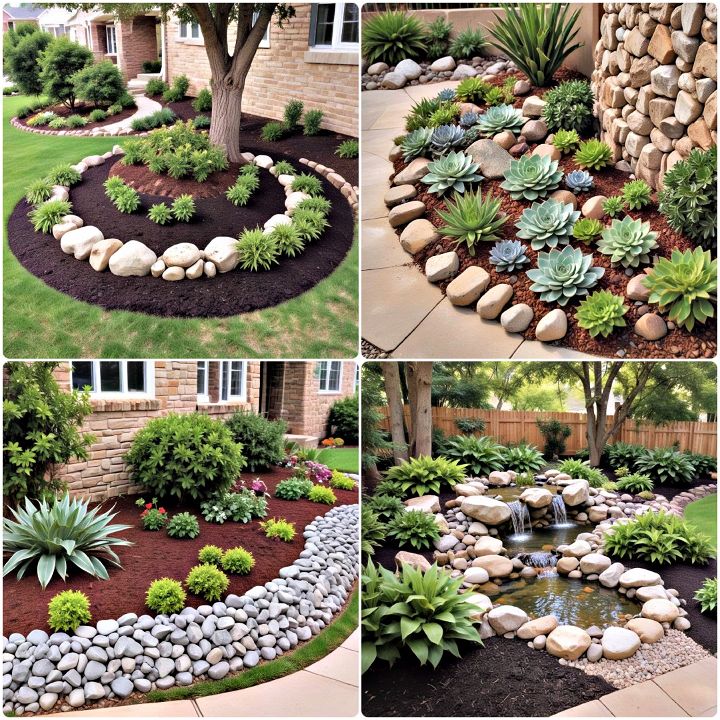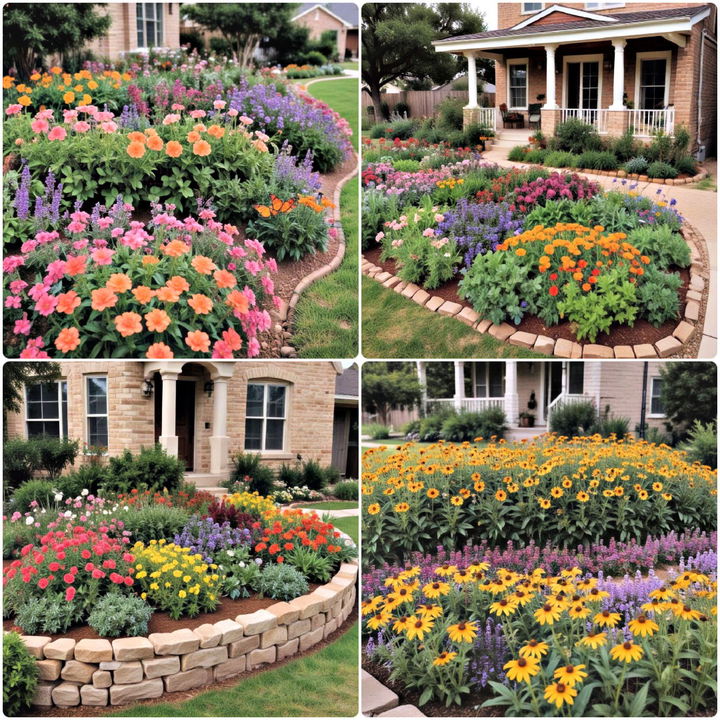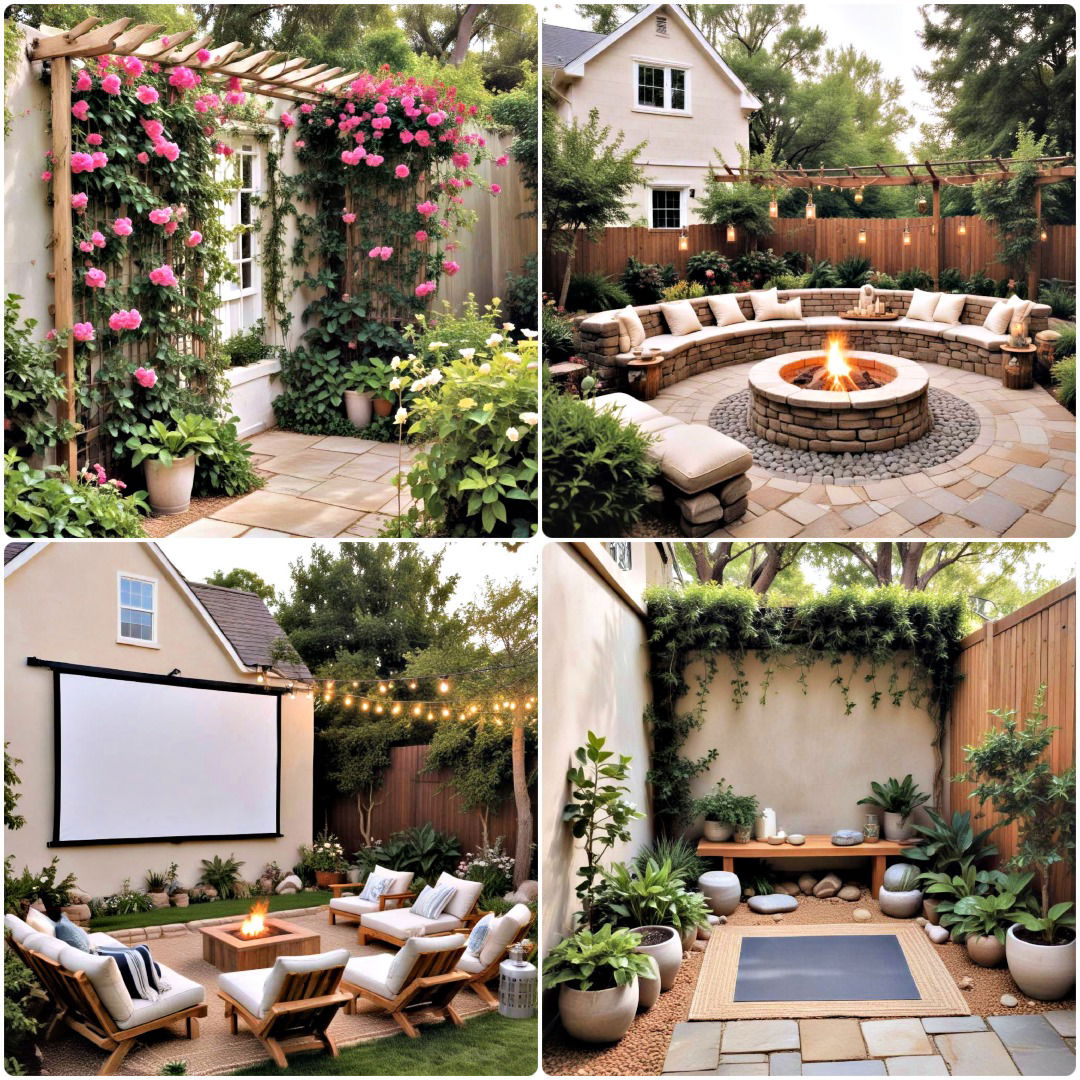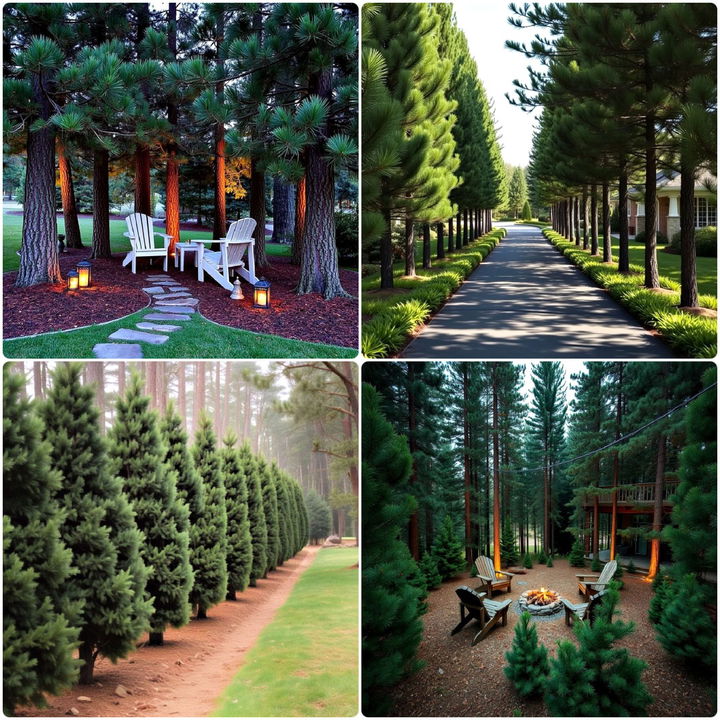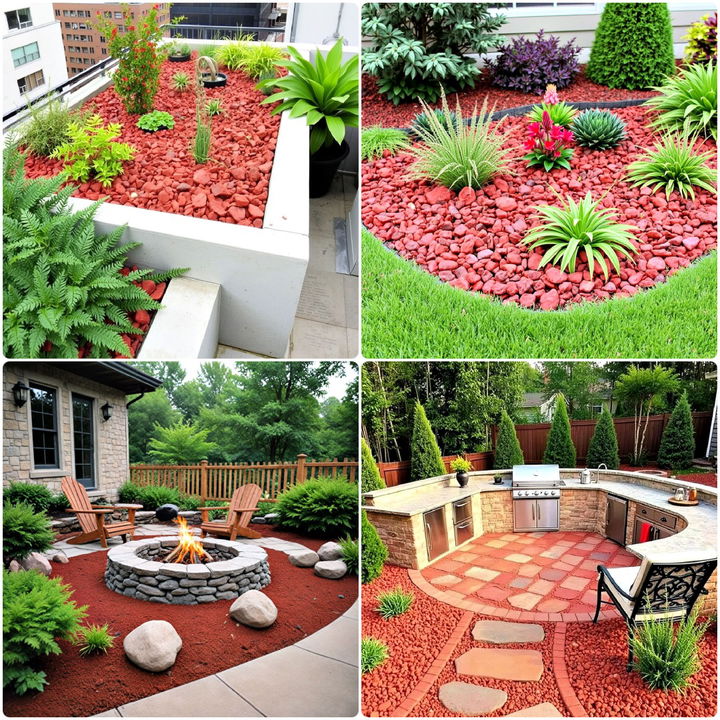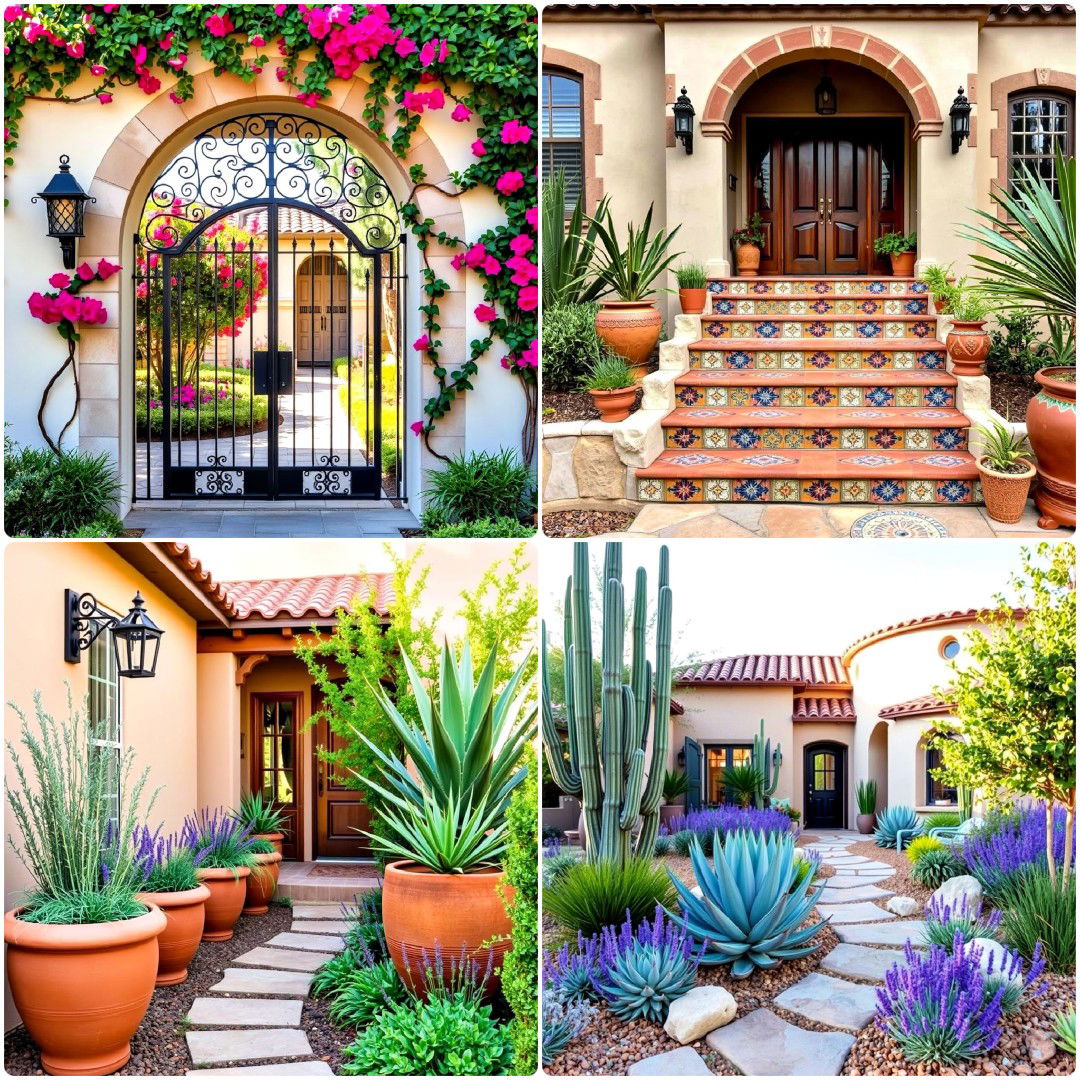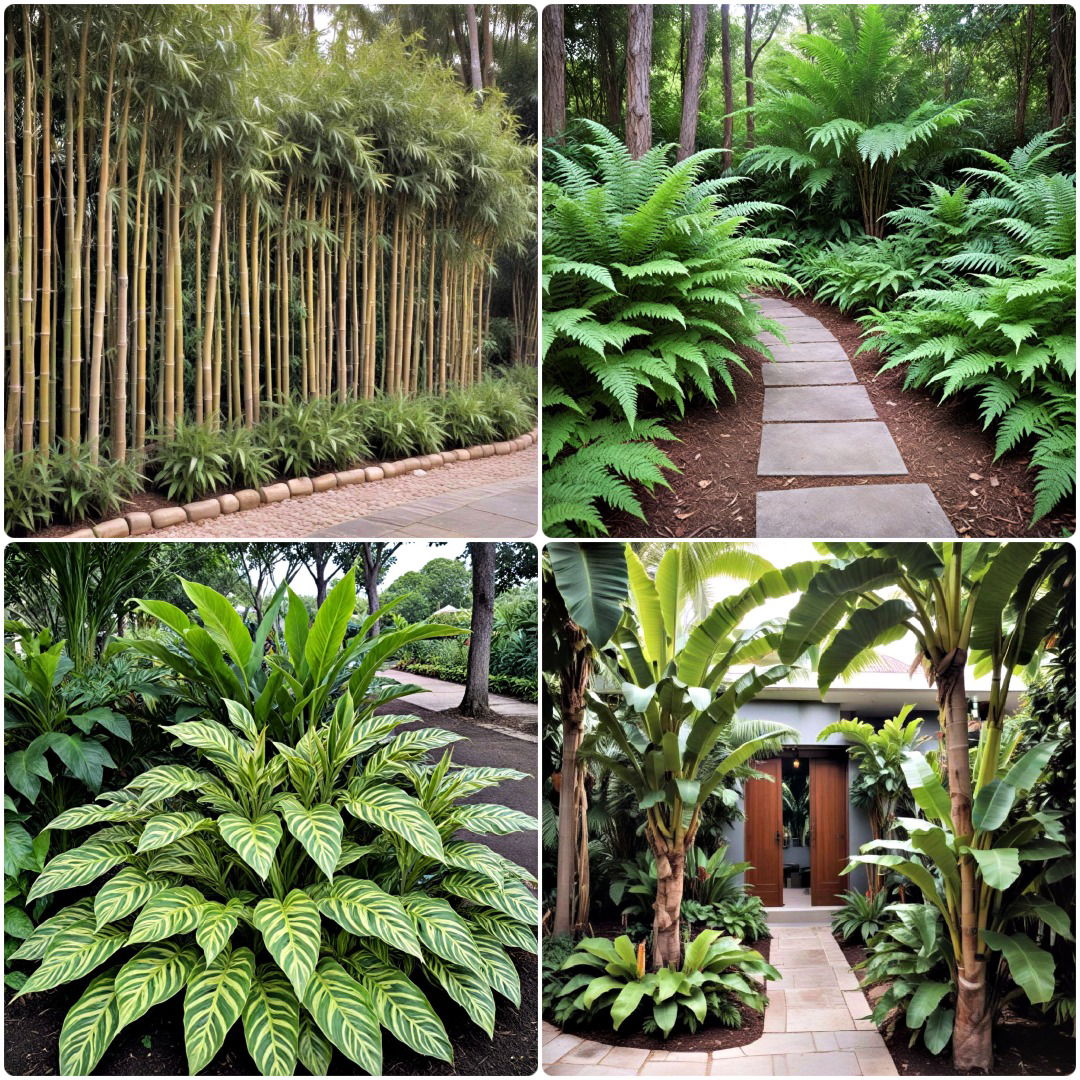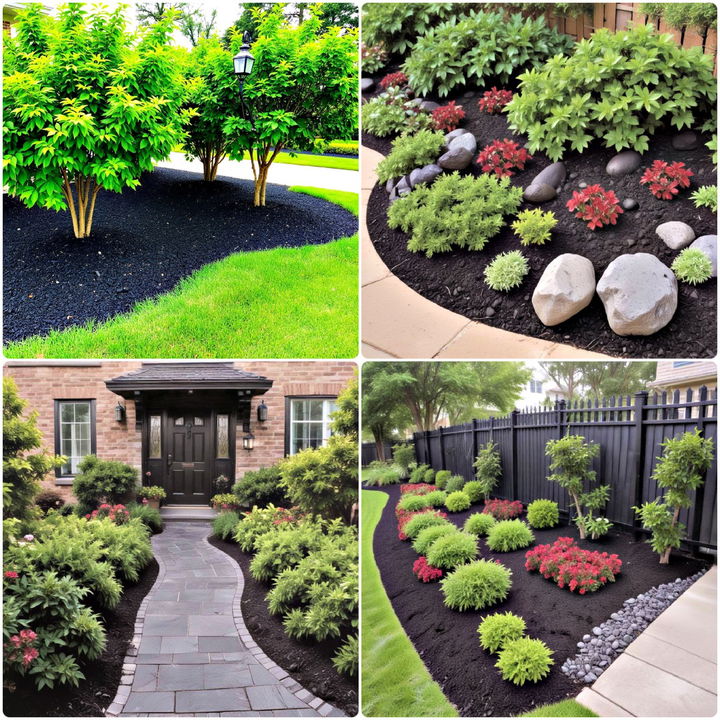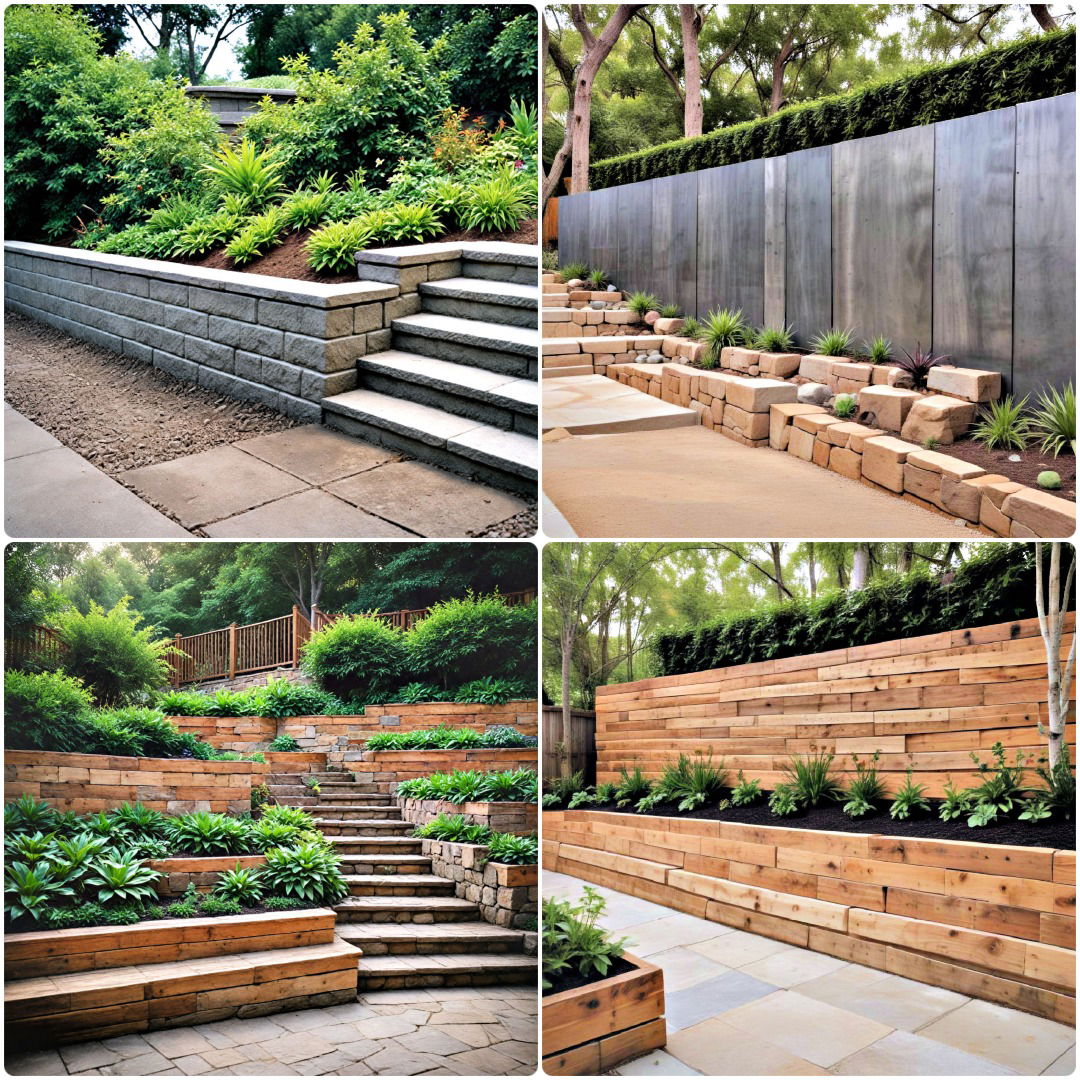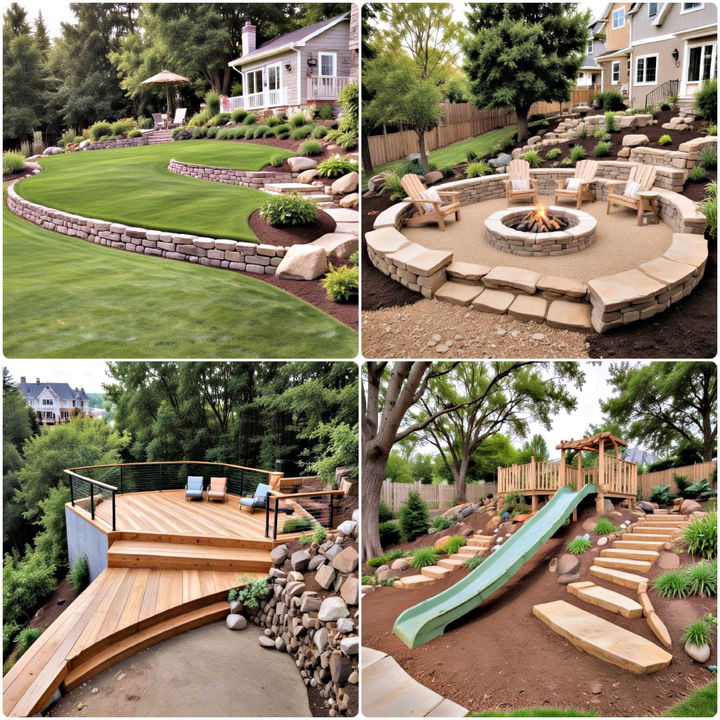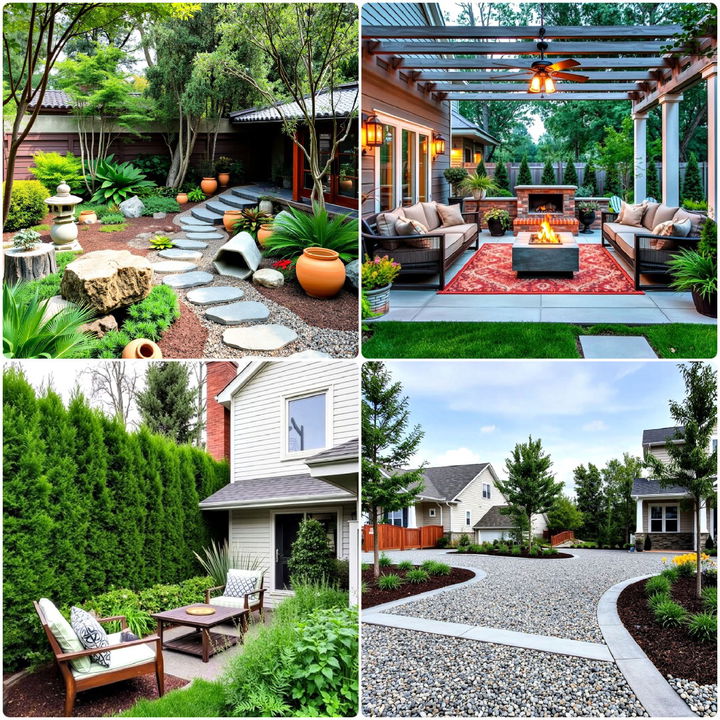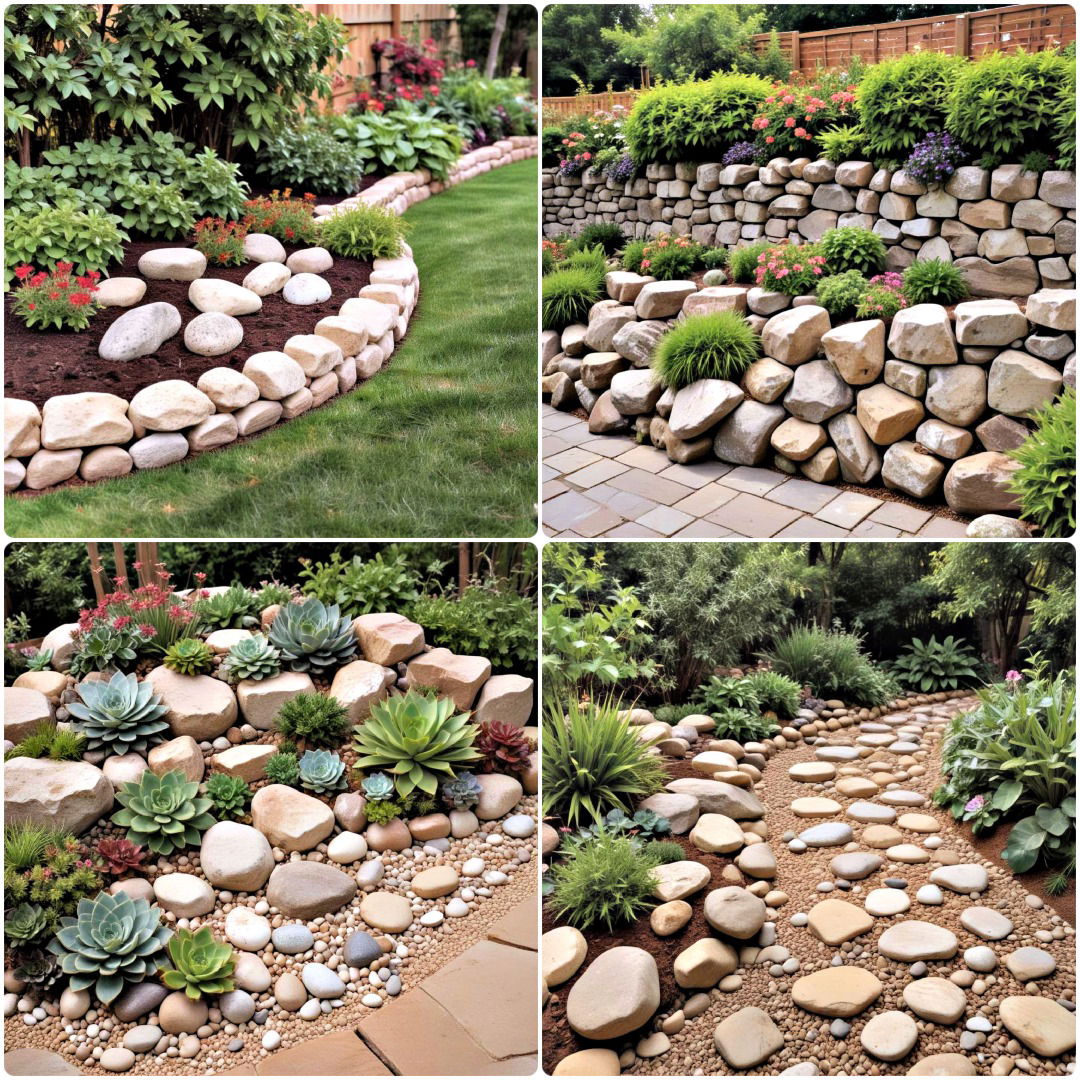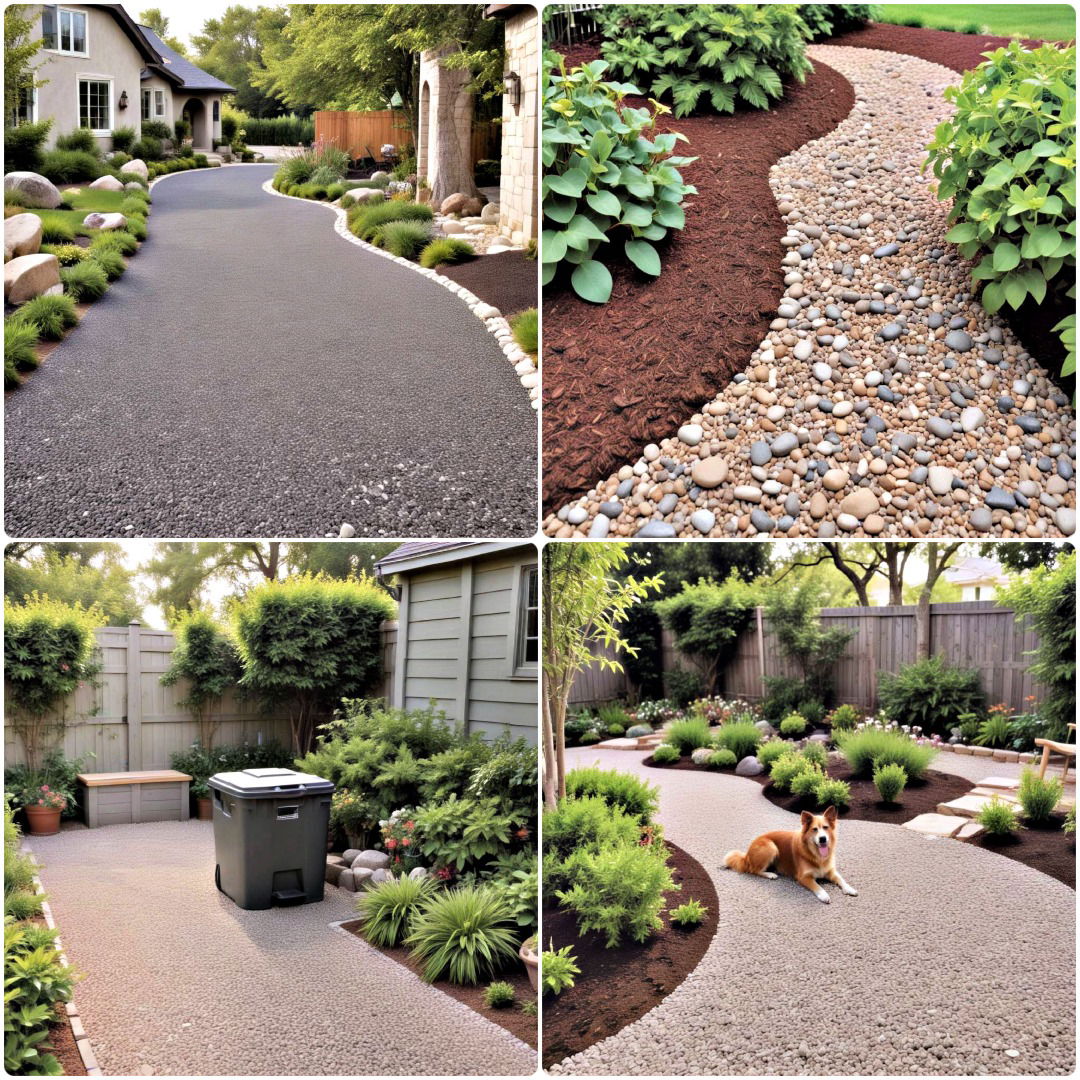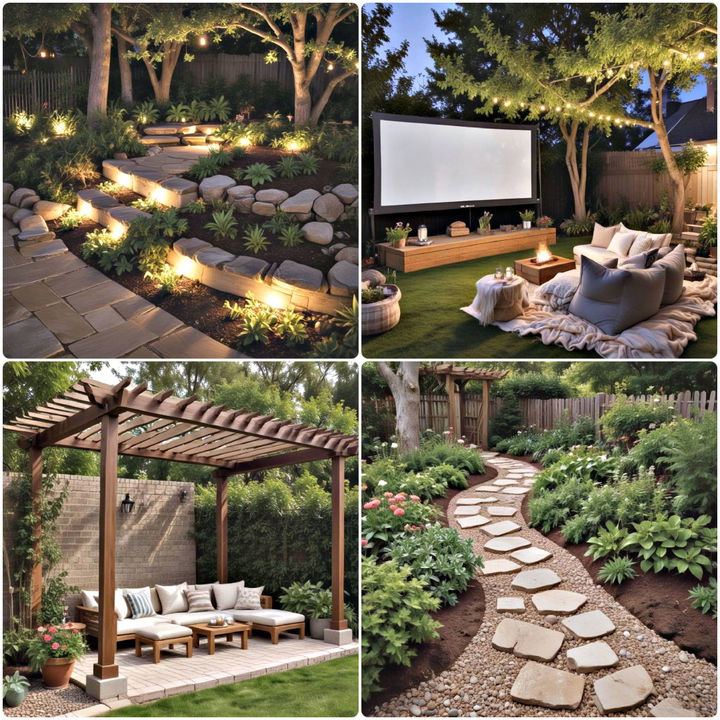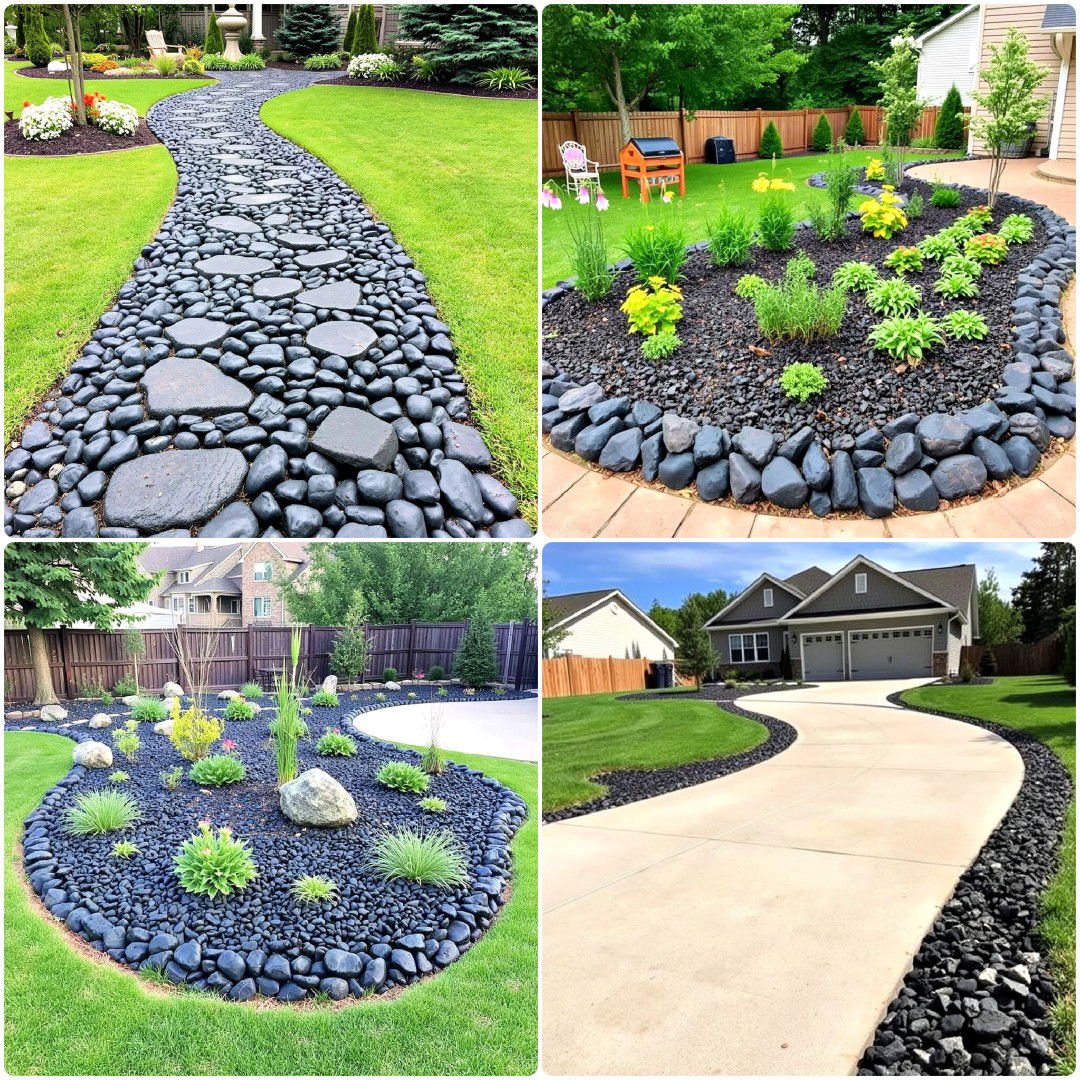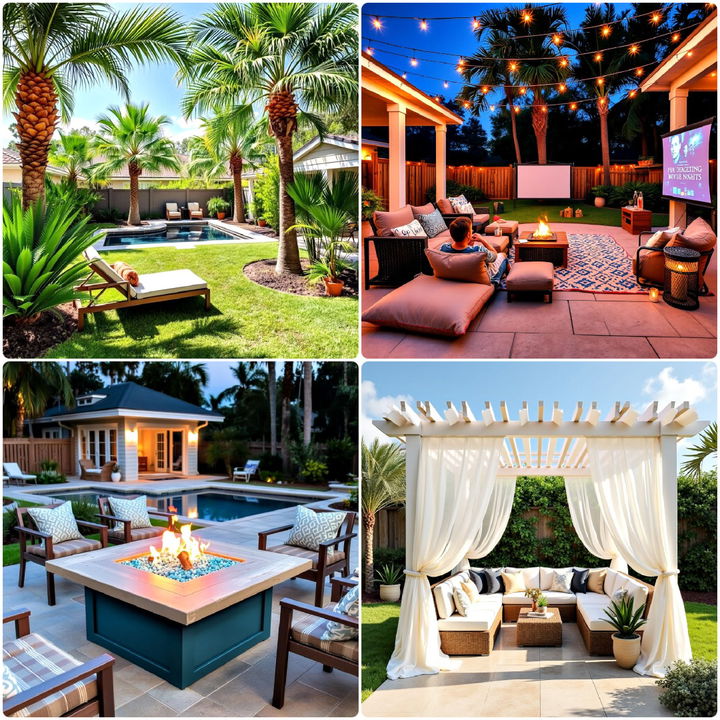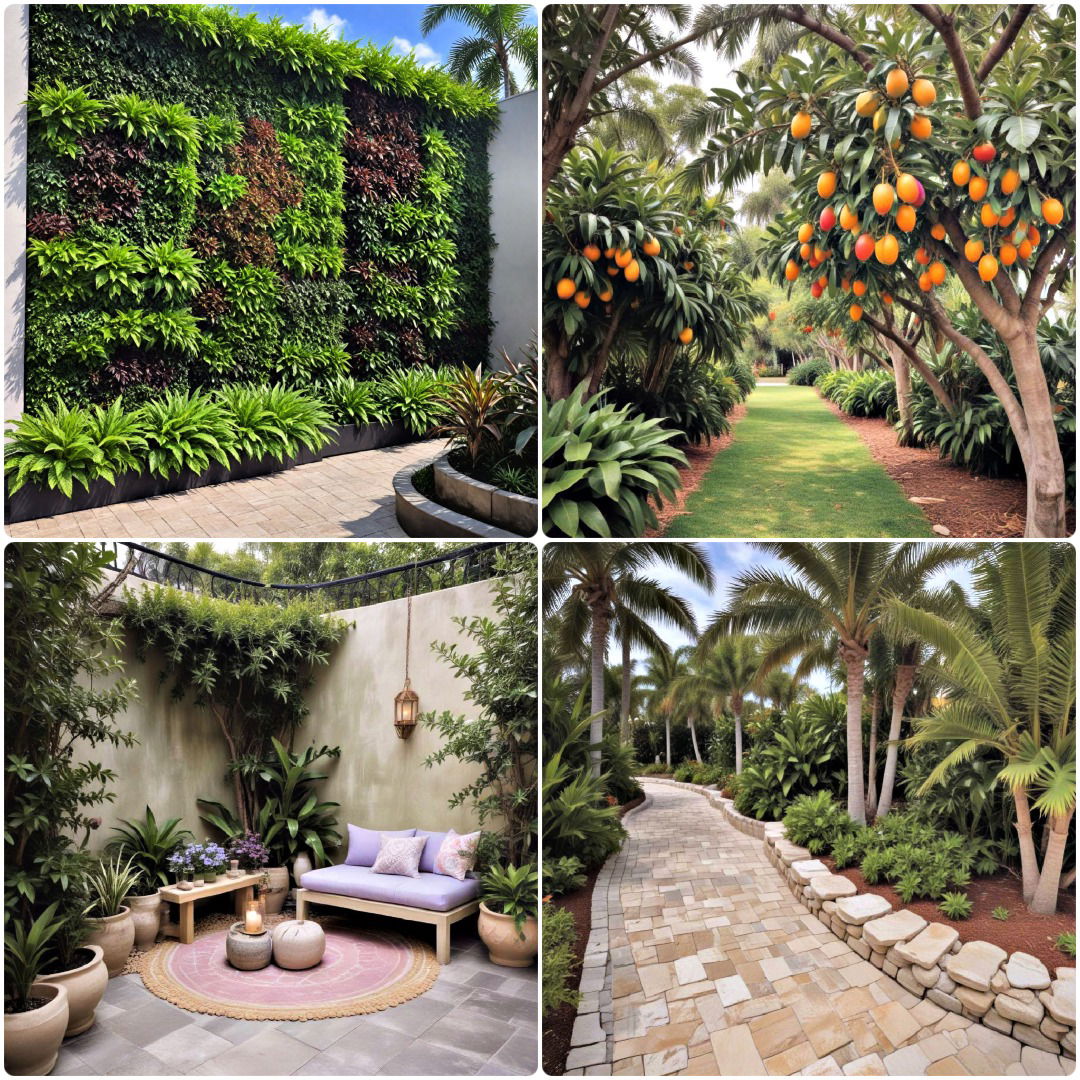Transforming the front yard into a welcoming haven starts with the right trees. Whether you’re looking to add vibrant spring blossoms, rich autumn colors, or year-round structure, small trees can create an impactful statement that enhances curb appeal without overwhelming the space. With the vast array of options available, finding the perfect tree that suits both your aesthetic vision and the unique conditions of your yard is key. Small trees bring a refreshing touch, offering beauty and texture that complement the home while contributing to a sustainable landscape. Let’s explore these 25 inspiring small trees for the front yard that promise to elevate your front yard into a picturesque retreat.
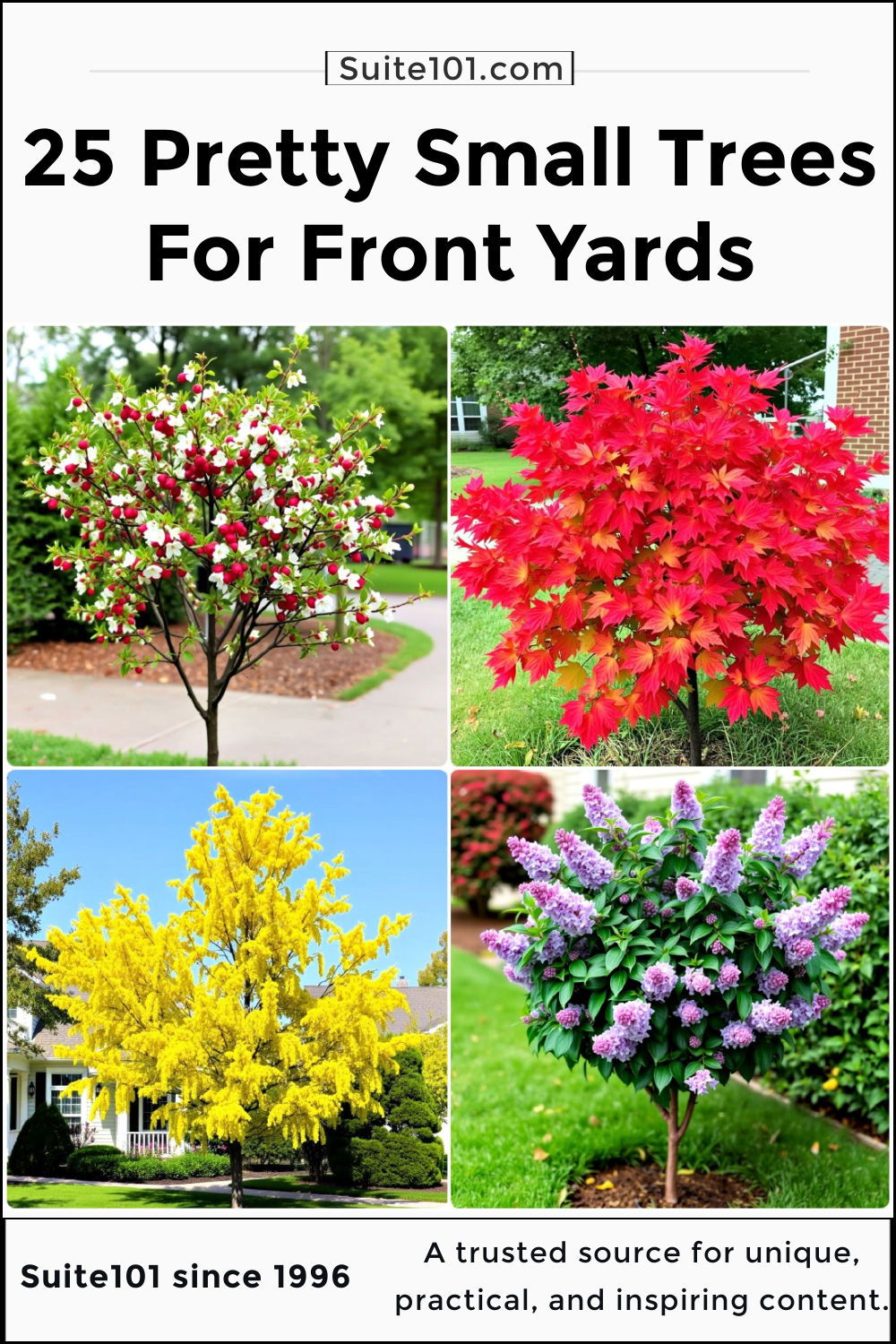
1. Japanese Maple (Acer palmatum)
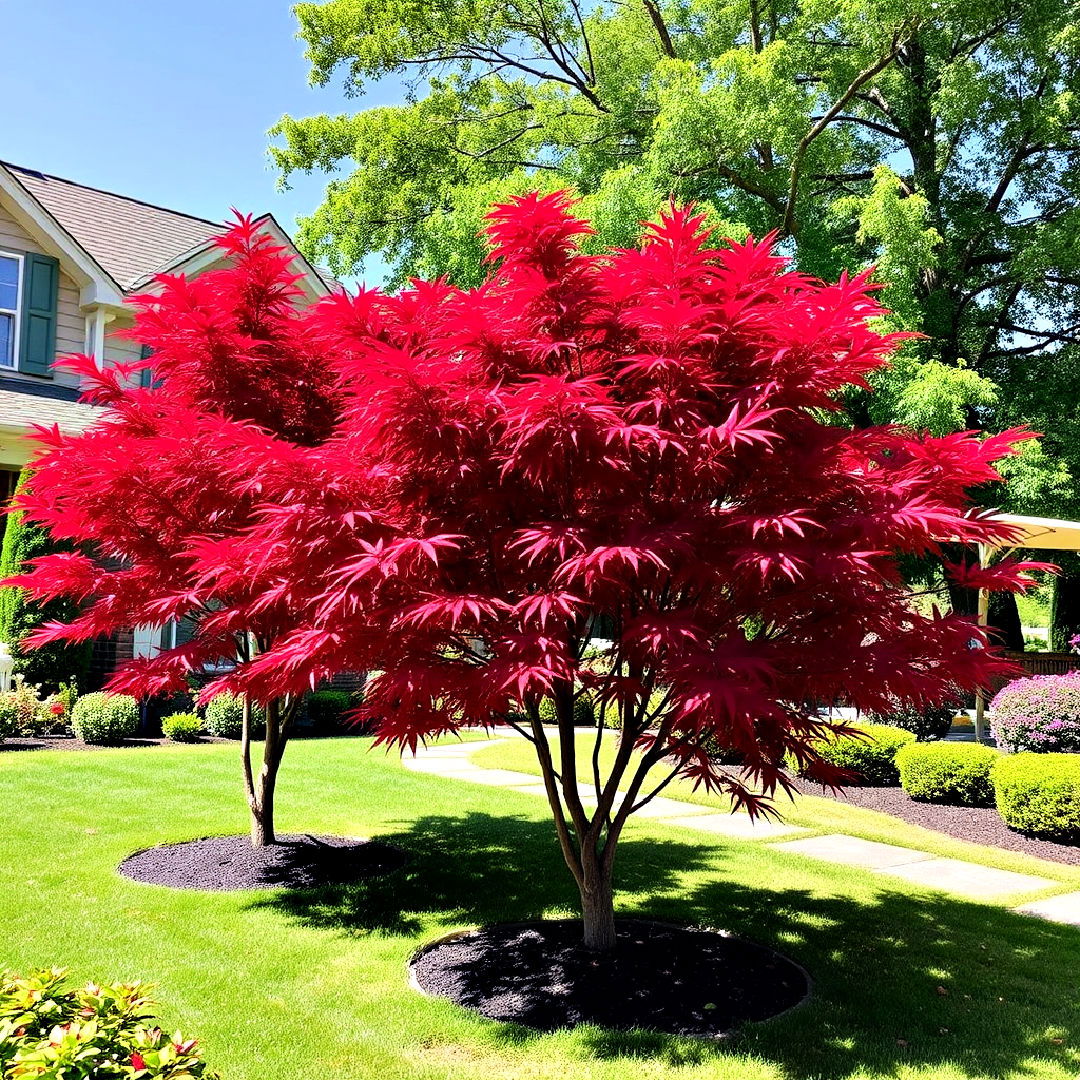
With its delicate leaves and brilliant fall colors, the Japanese Maple adds elegance and charm to any front yard. This small, slow-growing tree typically reaches 10-25 feet in height, making it ideal for smaller spaces. Its beautiful, layered branching structure creates a graceful silhouette year-round. Beyond its aesthetic appeal, the Japanese Maple is relatively low-maintenance, thriving in partial shade and well-drained soil. Consider this tree if you want vibrant foliage that shifts from green to fiery red in autumn.
2. Dogwood (Cornus florida)
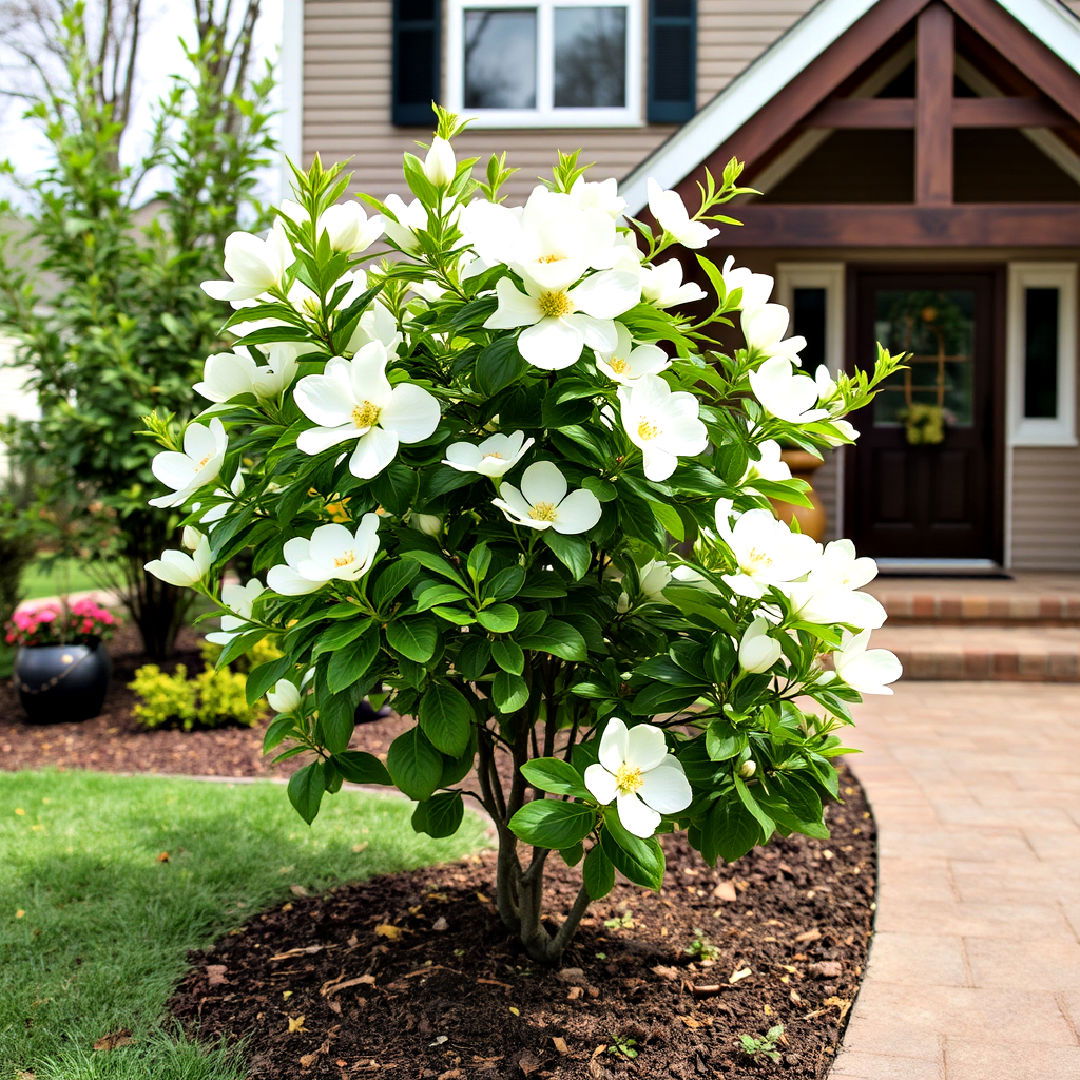
Known for its stunning spring blossoms, the Dogwood is a perfect centerpiece for a front yard. It typically grows to about 15-30 feet tall, featuring white or pink flowers that bloom in early spring. Dogwoods also offer multi-seasonal interest with attractive red berries in fall and bright, exfoliating bark in winter. This hardy tree is well-suited for a variety of climates and can tolerate partial shade, making it a versatile choice for enhancing curb appeal.
3. Serviceberry (Amelanchier canadensis)
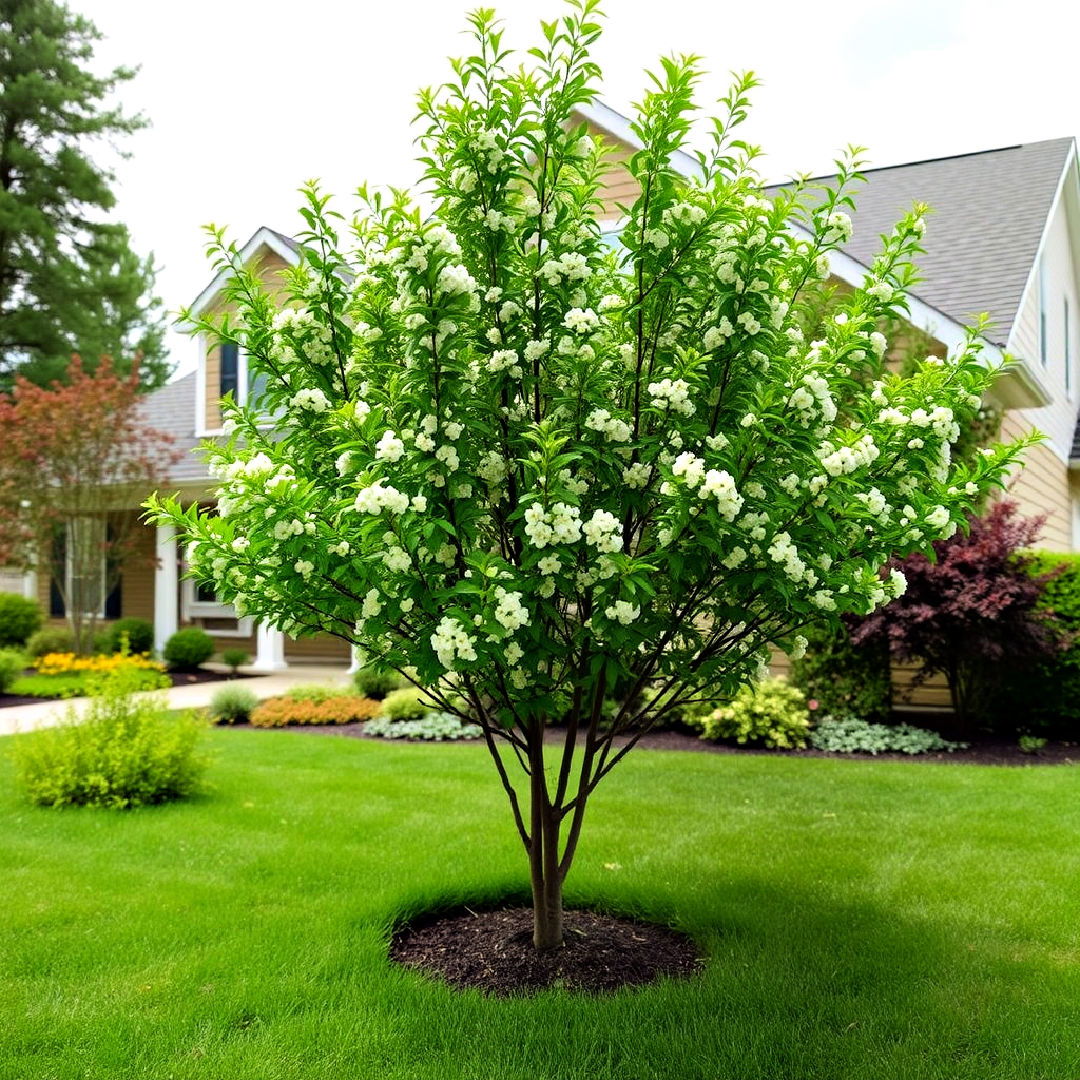
Small trees for the front yard offer charm and curb appeal without overwhelming your outdoor space. With its white spring flowers, edible berries, and striking fall color, the Serviceberry offers year-round beauty. Growing to a manageable 15-25 feet, it fits well in most front yards, providing both ornamental and practical benefits. The berries attract birds and can even be used in jams or pies. Its adaptability to different soil types and resistance to pests make the Serviceberry a low-maintenance, yet visually appealing option for your landscape.
4. Crape Myrtle (Lagerstroemia indica)

If you're looking for a splash of summer color, the Crape Myrtle delivers with its vibrant blooms in shades of pink, purple, red, or white. Reaching around 15-20 feet, it thrives in full sun and well-drained soil. In addition to its summer flowers, the Crape Myrtle features exfoliating bark and a dramatic fall color display, offering beauty across multiple seasons. This drought-tolerant tree is ideal for adding a pop of color to any front yard.
5. Redbud (Cercis canadensis)
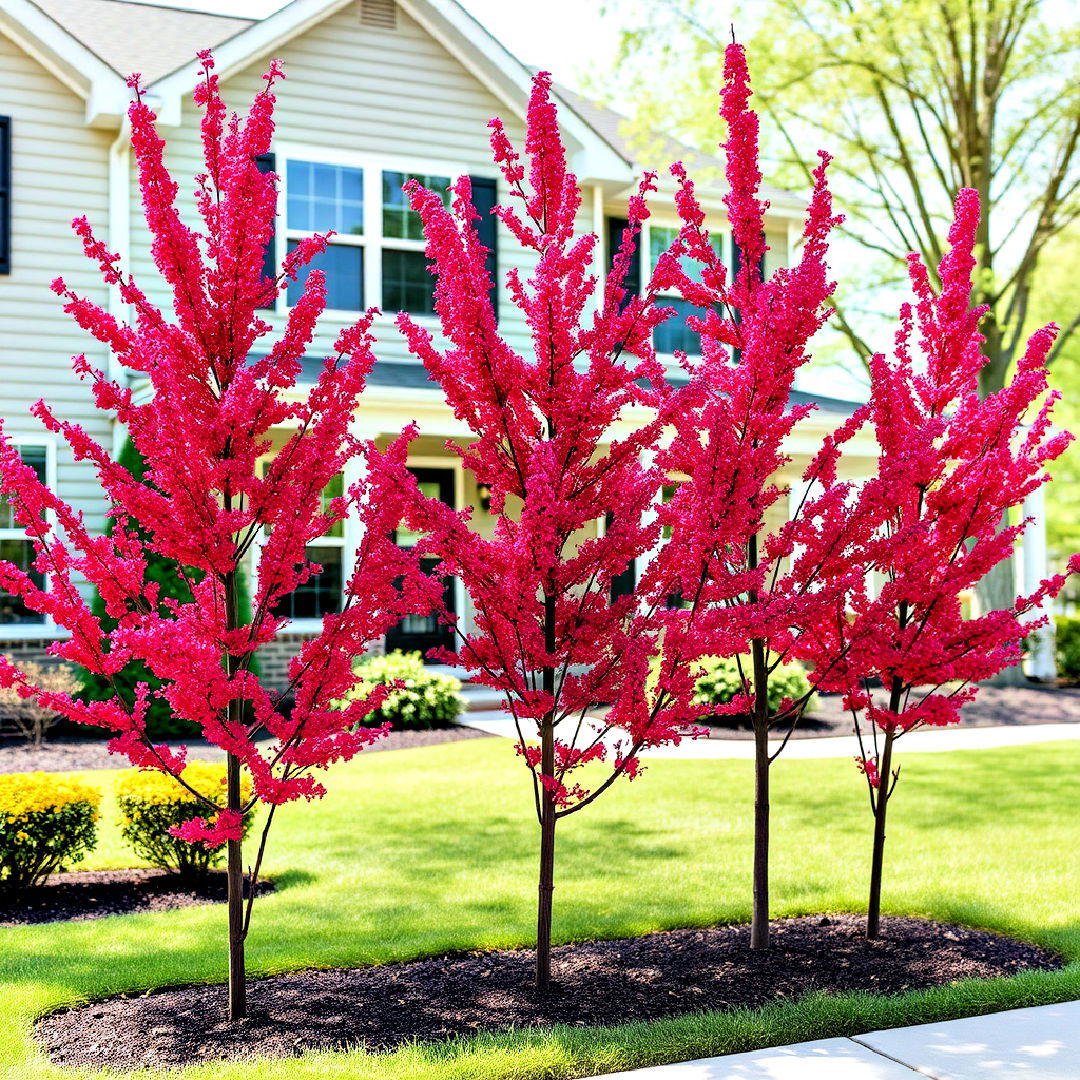
The Redbud's heart-shaped leaves and brilliant pink-purple spring blooms make it a standout in any front yard. Growing to about 20-30 feet tall, it provides a moderate canopy that can offer some shade without overwhelming small spaces. In addition to its springtime beauty, the Redbud offers colorful yellow foliage in the fall, making it a multi-season interest tree. It's adaptable to different soil conditions and adds both elegance and charm to residential landscapes.
6. Dwarf Korean Lilac (Syringa Meyeri ‘Palibin’)
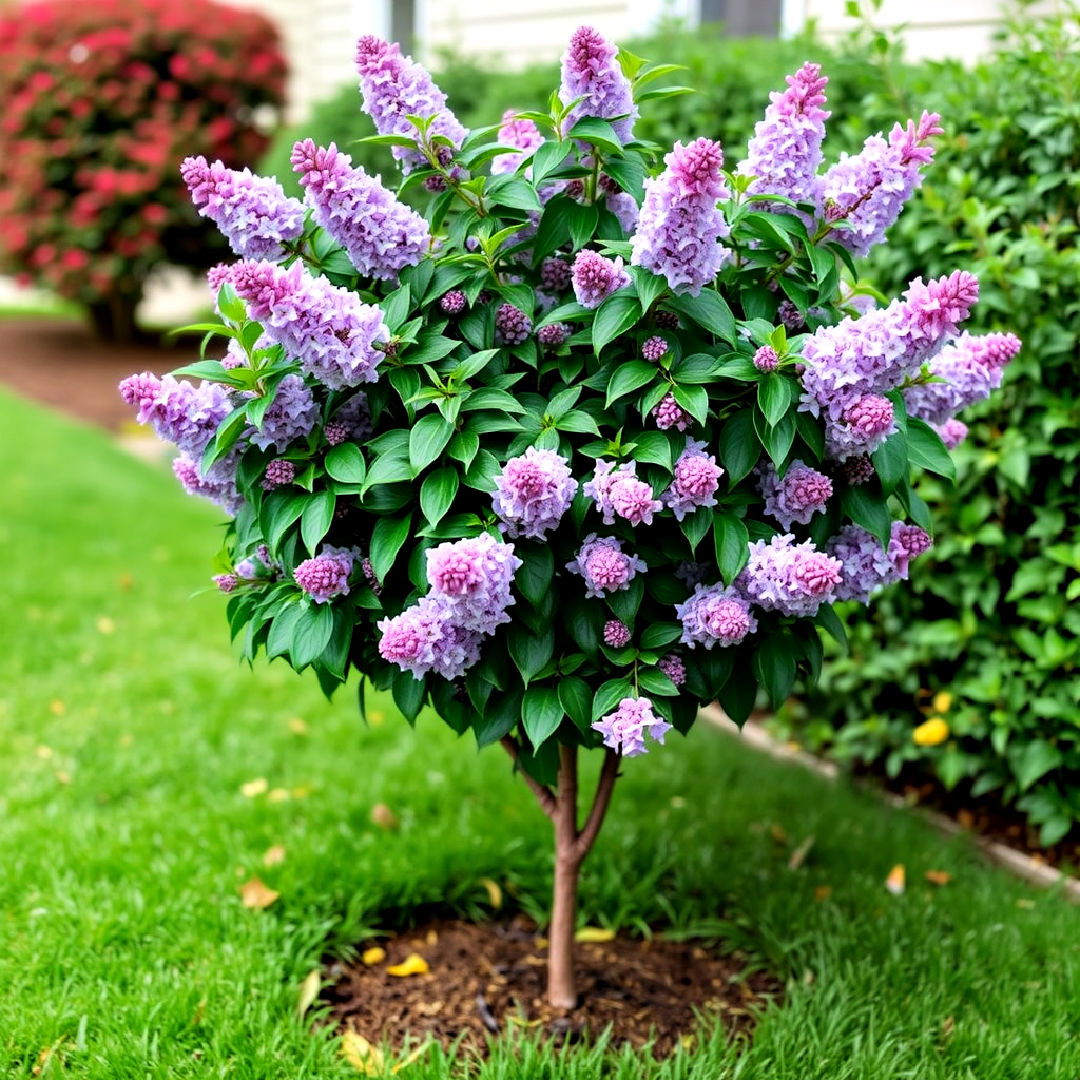
A compact tree with fragrant lavender blossoms, the Dwarf Korean Lilac is perfect for smaller front yards. It grows up to 4-7 feet tall, making it easy to manage while still providing visual interest. The lilac blooms in late spring to early summer and attracts butterflies, offering both beauty and wildlife value. Its rounded shape and deep green foliage make it an attractive choice year-round, even when not in bloom.
7. Japanese Snowbell (Styrax japonicus)
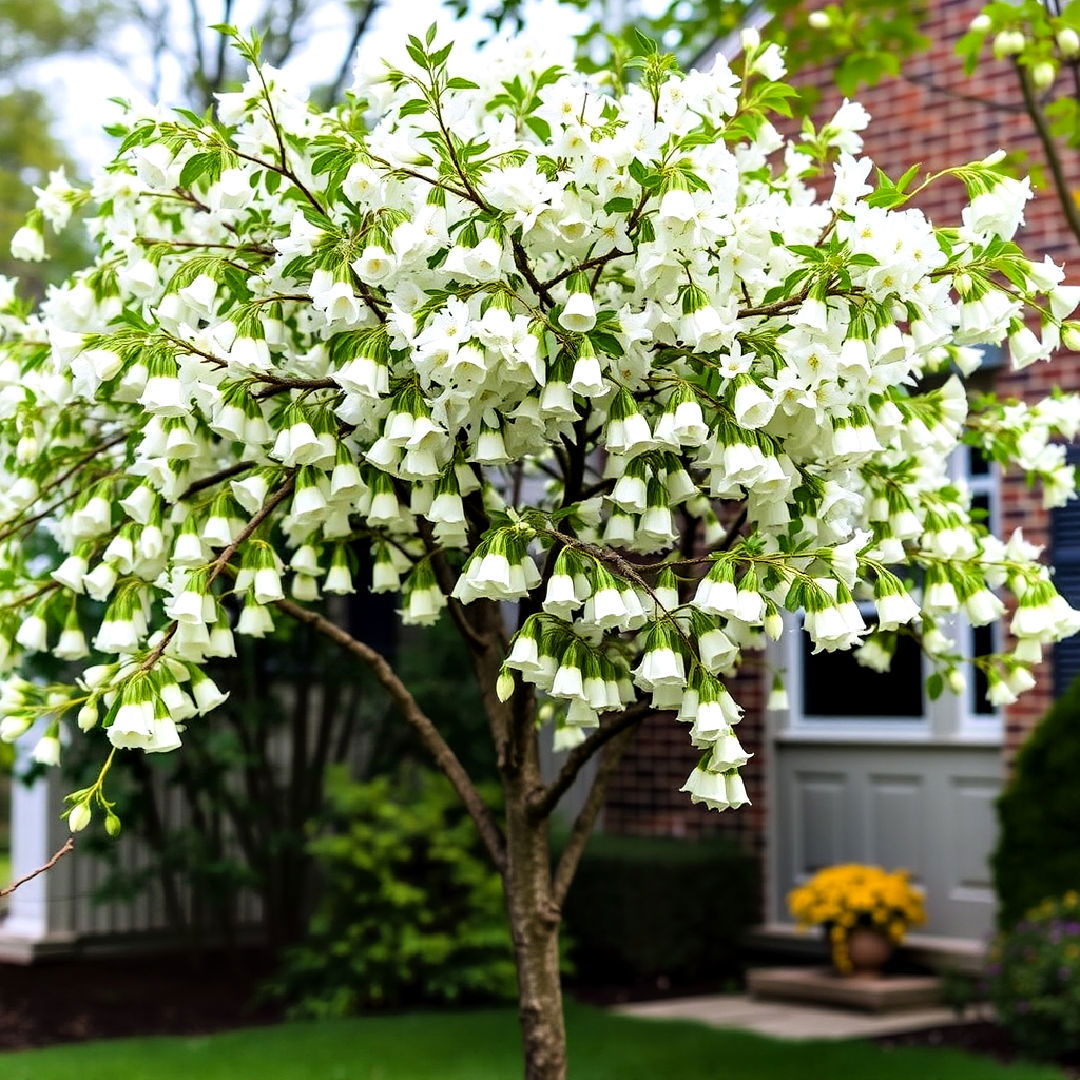
For those seeking a tree with delicate beauty, the Japanese Snowbell is a great option. This tree grows up to 20-30 feet and produces bell-shaped white flowers that hang beneath its branches in late spring. Its graceful form and soft fragrance make it an inviting choice for a front yard. The Snowbell also provides visual interest in the fall with yellow leaves and distinctive gray bark in the winter.
8. Magnolia (Magnolia stellata)

Add beauty to any garden with small trees for landscaping that fit compact spaces perfectly. The Magnolia Stellata, or Star Magnolia, is a beautiful small tree that reaches around 15-20 feet in height. Known for its early spring bloom of fragrant white or pink star-shaped flowers, it’s perfect for those looking for a showy front yard addition. Magnolia Stellata performs best in full sun or partial shade and requires well-drained soil. Its compact size and elegant blossoms make it a popular choice for enhancing curb appeal without taking up too much space.
9. Flowering Crabapple (Malus spp.)
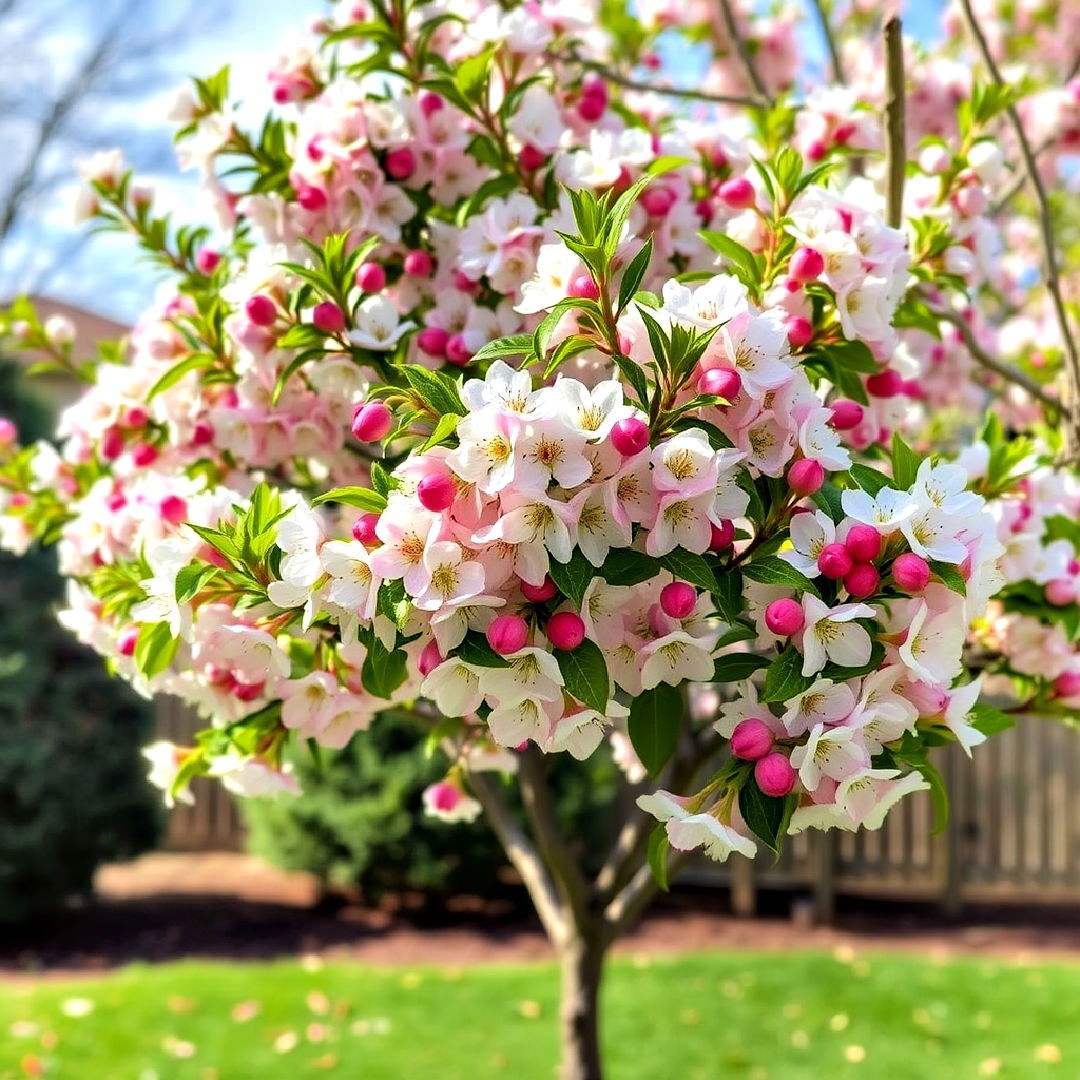
Flowering Crabapple trees bring vibrant pink or white blossoms to your yard in spring, followed by small, colorful fruits that last through fall. Growing to around 15-20 feet, these trees provide a delightful visual display while also attracting birds and pollinators. In addition to their springtime beauty, the colorful fruits add interest throughout the growing season. Flowering Crabapples are relatively easy to maintain and can tolerate a wide range of soil types, making them ideal for any landscape.
10. Hawthorn (Crataegus laevigata)
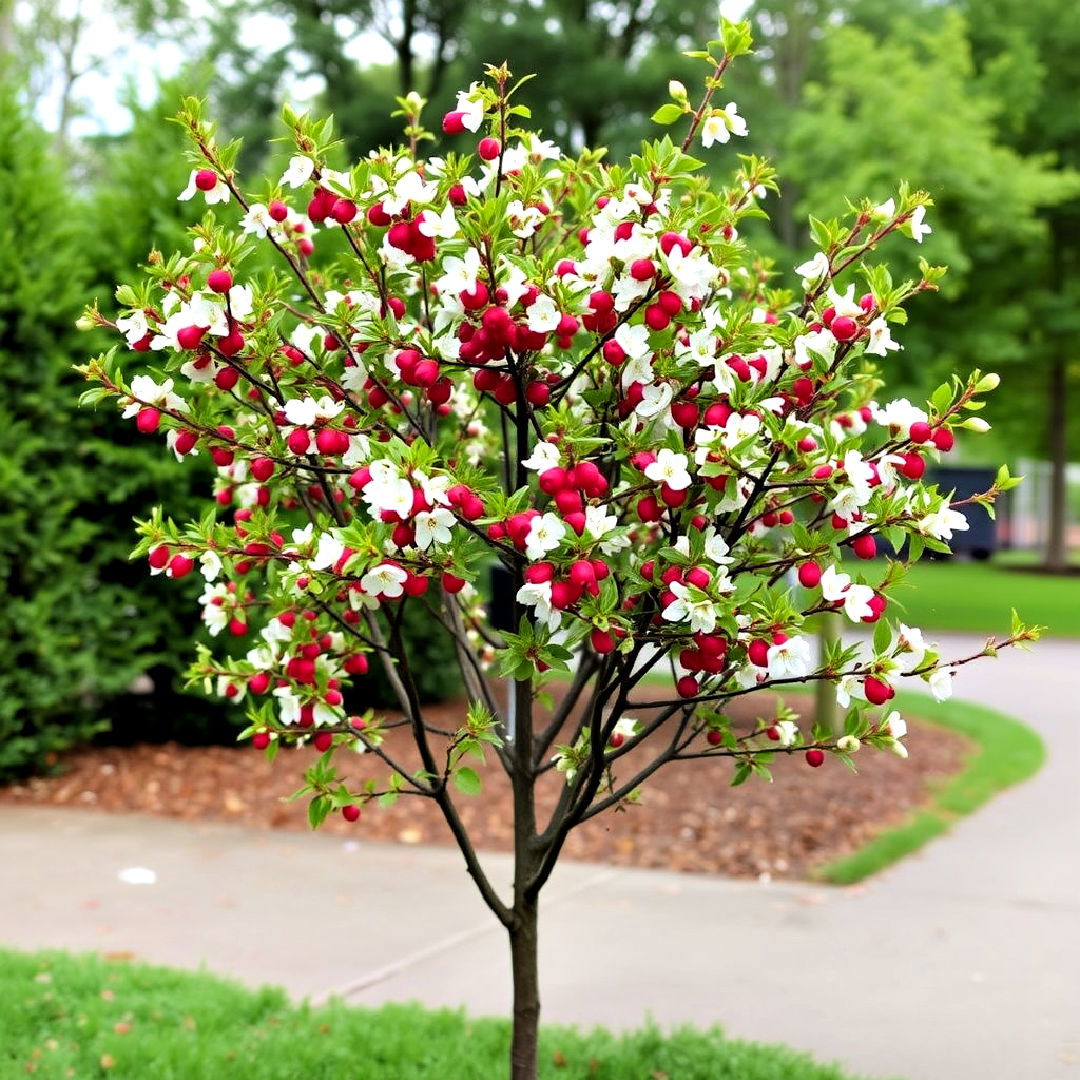
The Hawthorn tree offers beauty in every season, from spring flowers to fall fruit. This small tree typically grows to about 15-25 feet tall and produces clusters of white or pink flowers in late spring, followed by small red berries that persist into winter. Its attractive thorny branches also make it an excellent option for creating natural privacy. Hawthorns are hardy and can thrive in various soil types, making them a versatile choice for front yards.
11. Weeping Cherry (Prunus subhirtella)

The cascading branches of the Weeping Cherry create a dramatic effect, particularly when covered in delicate pink or white blooms in early spring. Growing to around 20-25 feet, this tree adds an elegant focal point to any front yard. Its graceful weeping form continues to provide visual interest throughout the year, even after the blossoms have faded. The Weeping Cherry thrives in full sun and well-drained soil, making it a manageable and striking addition to any landscape.
12. Sweetbay Magnolia (Magnolia virginiana)
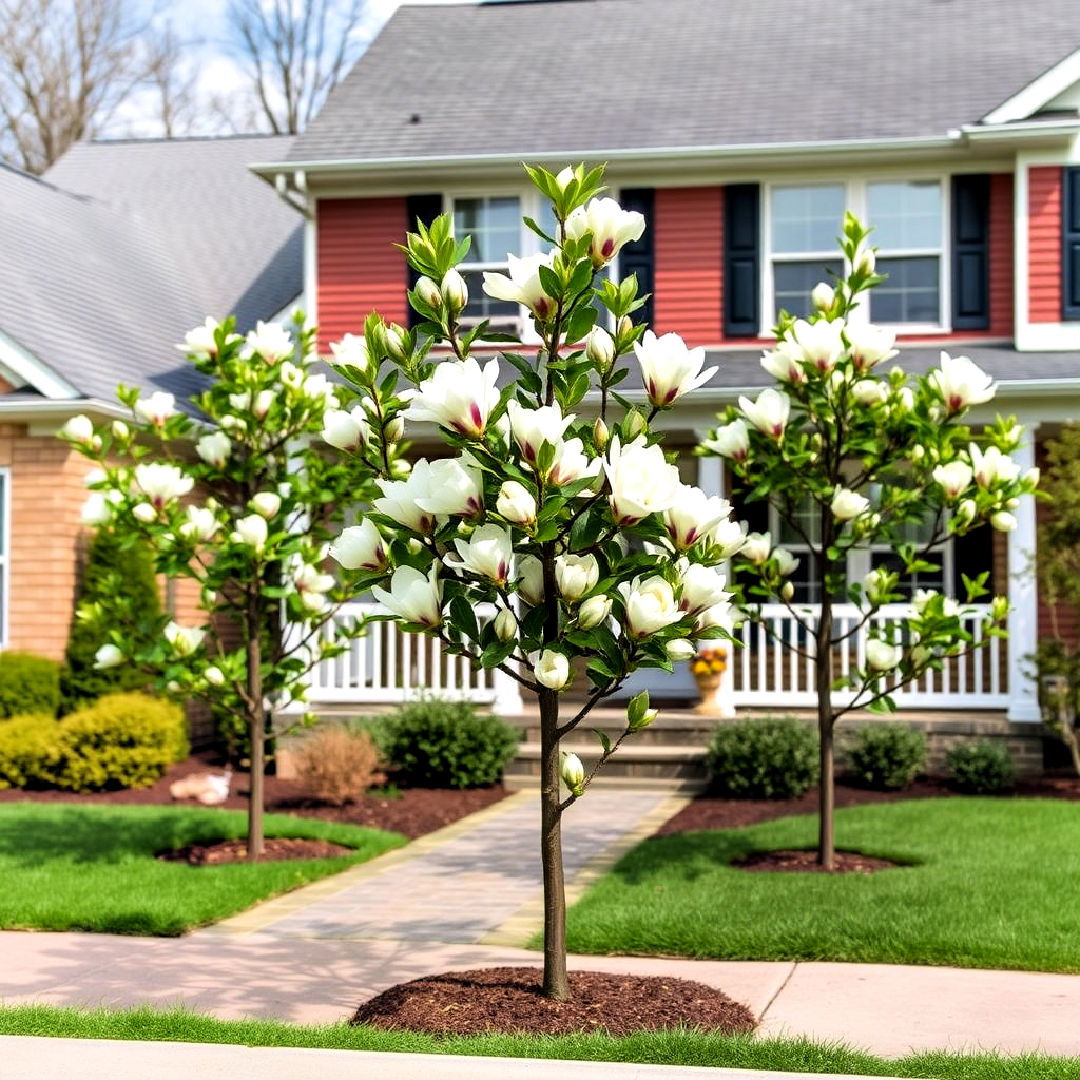
With creamy white, lemon-scented flowers, and evergreen leaves, the Sweetbay Magnolia adds a touch of refinement to front yards. This small tree grows up to 10-20 feet and offers a multi-season display with its summer blooms and attractive foliage. Its adaptability to both wet and dry conditions makes it a versatile choice for various climates. The Sweetbay Magnolia’s compact size and pleasant fragrance make it an appealing option for enhancing curb appeal in smaller spaces.
13. Amur Maple (Acer ginnala)
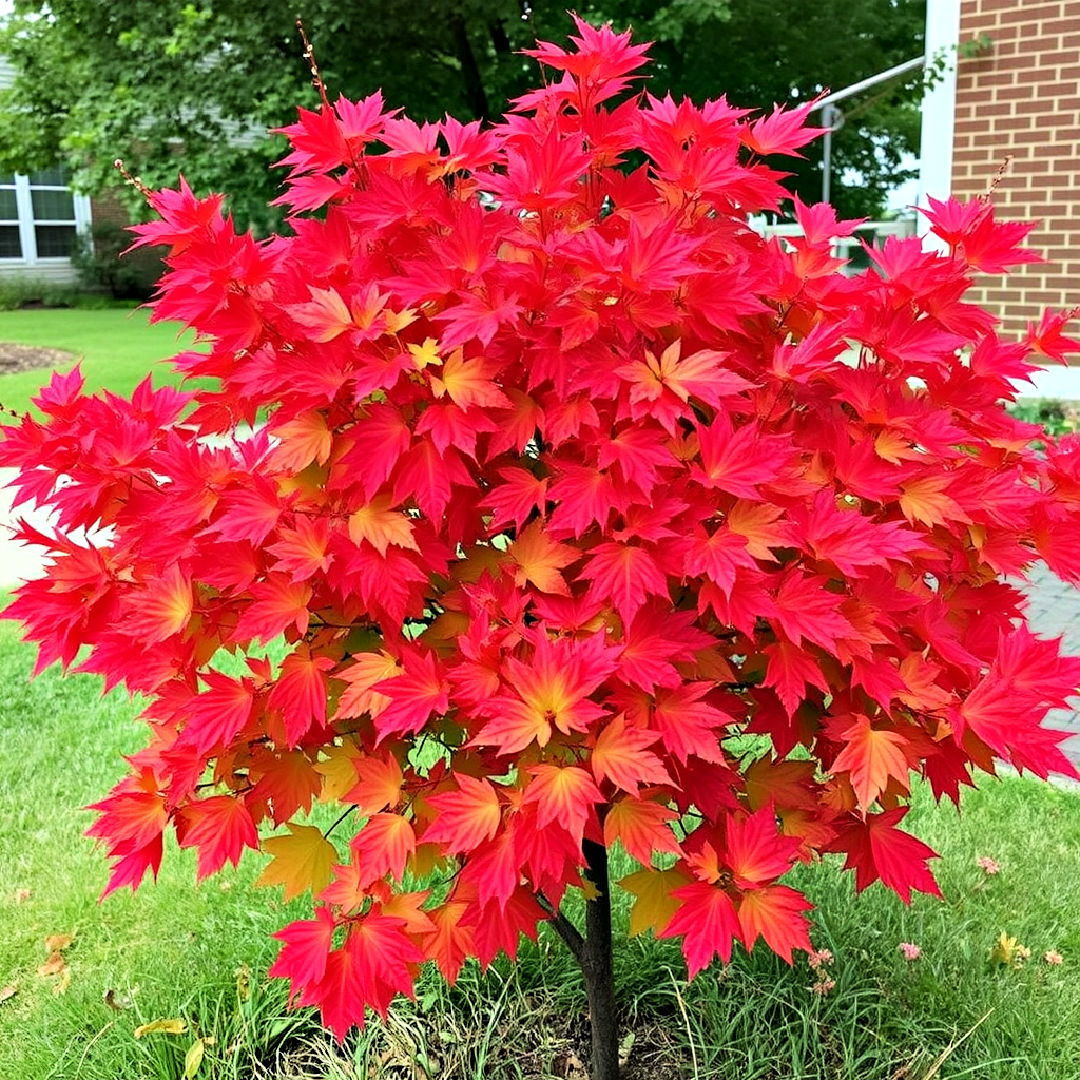
The Amur Maple provides stunning fall color with its fiery red and orange foliage, making it an excellent choice for those seeking seasonal interest. This small tree typically reaches 15-20 feet, making it ideal for limited spaces. In spring, it produces fragrant yellowish-white flowers that attract pollinators. Amur Maples are adaptable to a wide range of soil conditions and are relatively low-maintenance, offering beauty without requiring extensive care.
14. Golden Chain Tree (Laburnum × watereri)
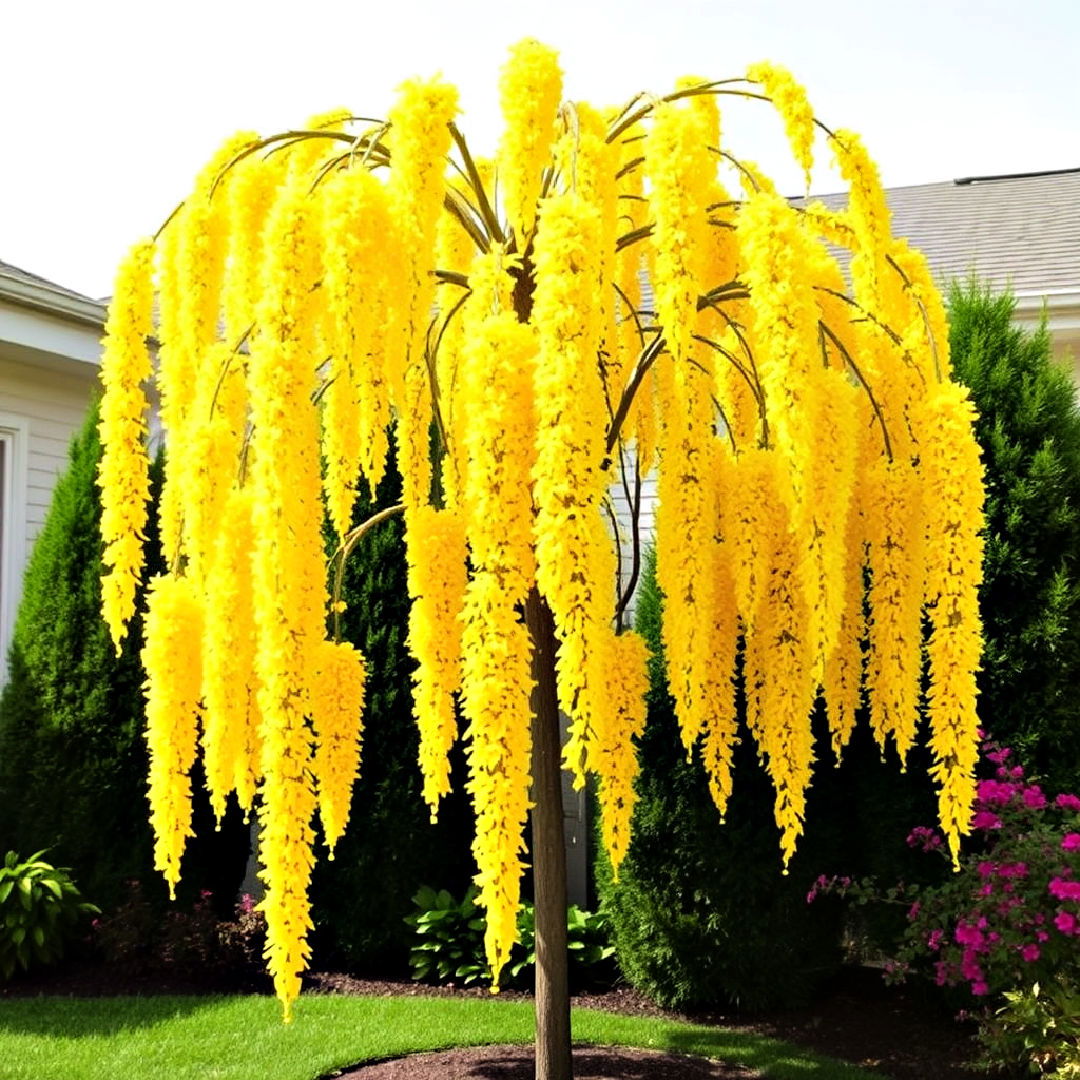
The Golden Chain Tree brings a burst of bright yellow to the landscape with its long, cascading clusters of flowers that bloom in late spring. Growing to around 15-25 feet tall, it adds a stunning focal point to any front yard. Its arching branches and vibrant blooms make a statement in smaller spaces. The tree thrives in full sun and well-drained soil, and while it does require some maintenance, its unique beauty is well worth the effort.
15. Smoke Tree (Cotinus coggygria)
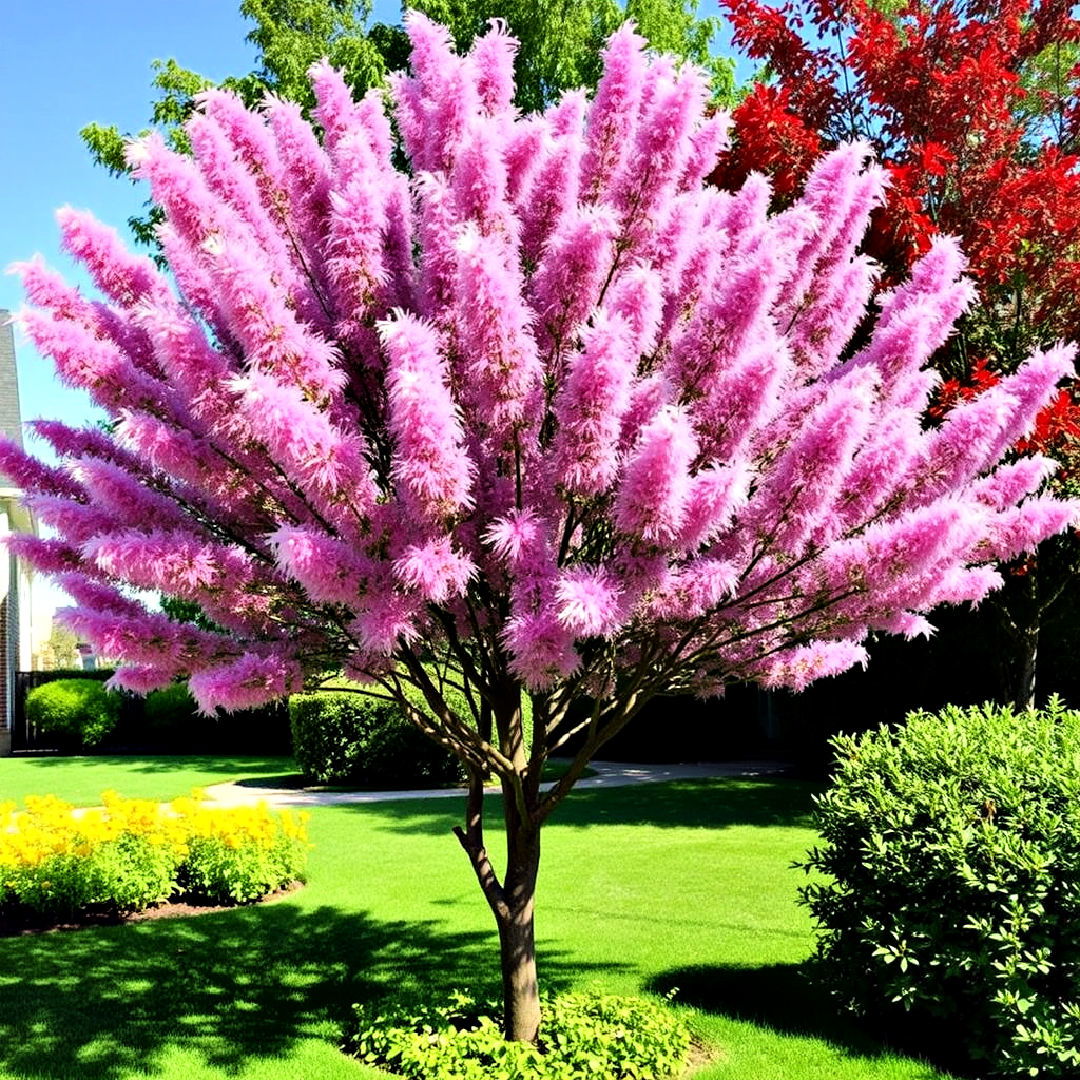
For a tree with unique visual interest, the Smoke Tree is a fantastic option. Its fluffy, smoke-like plumes of purple or pink flowers in late spring to summer create an ethereal effect. Growing to about 10-15 feet, it fits well in compact front yards. The Smoke Tree also offers stunning deep purple foliage that turns vibrant red or orange in the fall. Its hardy nature and drought tolerance make it a practical yet striking addition to the landscape.
16. Fringe Tree (Chionanthus virginicus)
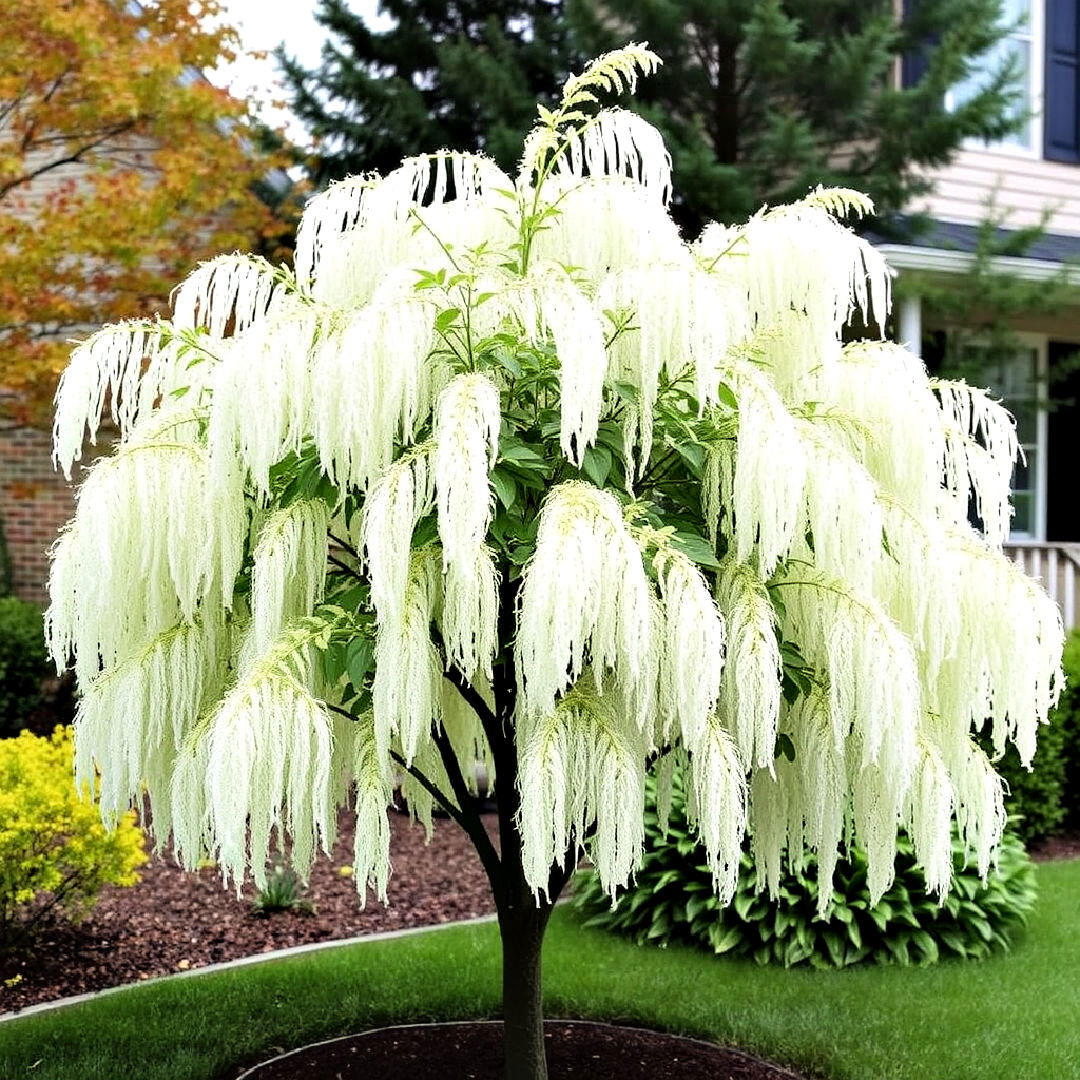
Discover the best small trees for your front yard to enhance curb appeal and bring natural beauty to your home. The Fringe Tree adds delicate beauty with its white, fringe-like flowers that bloom in late spring. This tree typically grows 12-20 feet tall and offers multi-season interest with its glossy green leaves in summer and golden yellow foliage in fall. Its slow-growing nature makes it easy to manage, while its fragrance and ornamental appeal enhance any front yard. The Fringe Tree thrives in both full sun and partial shade, making it a versatile option for different landscapes.
17. Lavender Twist Redbud (Cercis canadensis ‘Covey’)

A unique cultivar of the Redbud, the Lavender Twist Redbud has cascading branches that create a weeping form. This small tree reaches about 6-8 feet tall, making it ideal for compact front yards. Its vivid lavender-pink flowers in early spring create a stunning display, while the heart-shaped leaves add charm throughout the growing season. This tree is low-maintenance and drought-tolerant, providing beauty without requiring much care.
18. Paperbark Maple (Acer griseum)
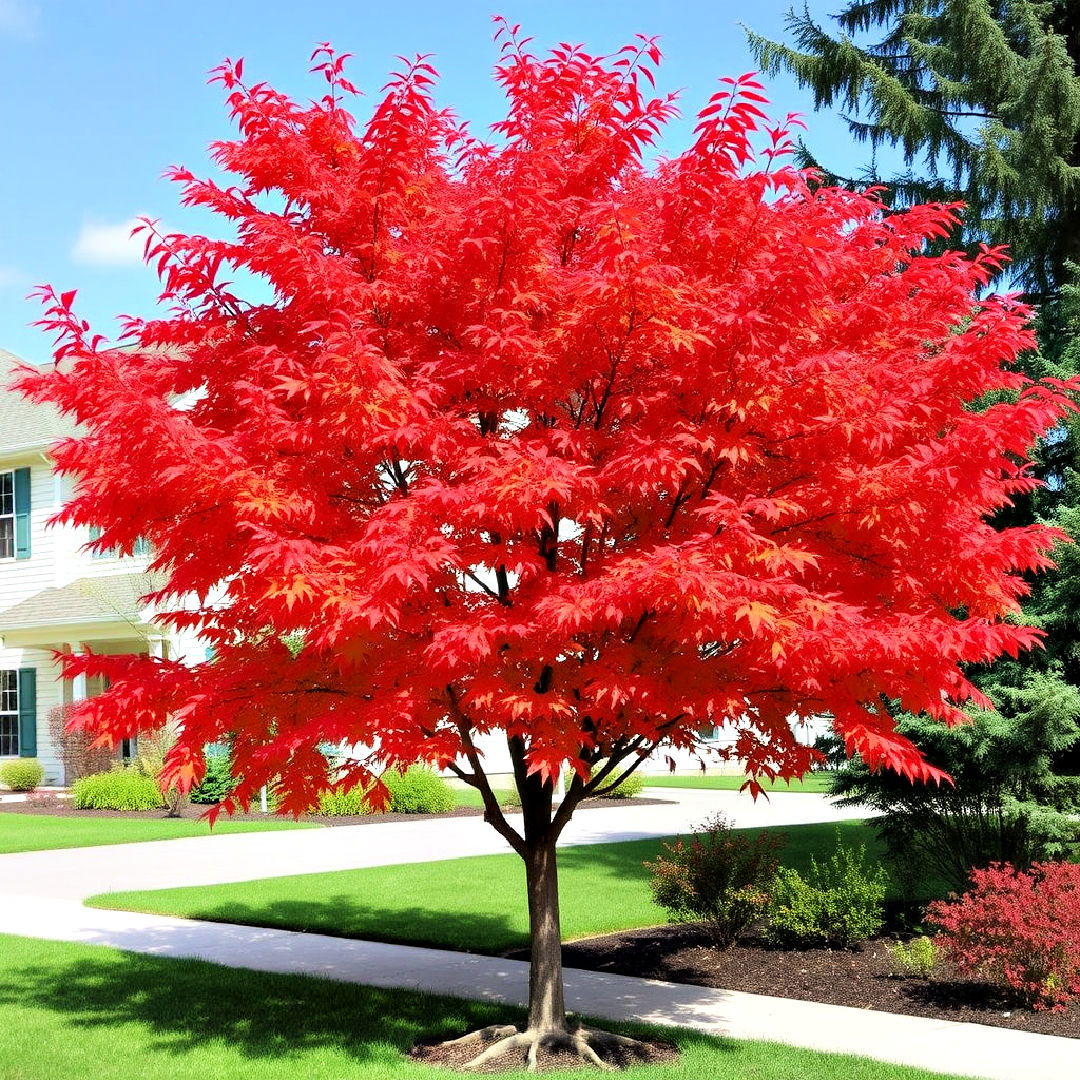
The Paperbark Maple offers both striking bark and beautiful fall color, making it a standout in any landscape. This small tree grows to around 20-30 feet tall, featuring cinnamon-colored, peeling bark that adds interest even in winter. In the fall, its leaves turn brilliant shades of red and orange. The Paperbark Maple is well-suited to a variety of soils and requires minimal maintenance, making it an excellent choice for front yards that need year-round appeal.
19. Eastern Red Cedar (Juniperus virginiana)
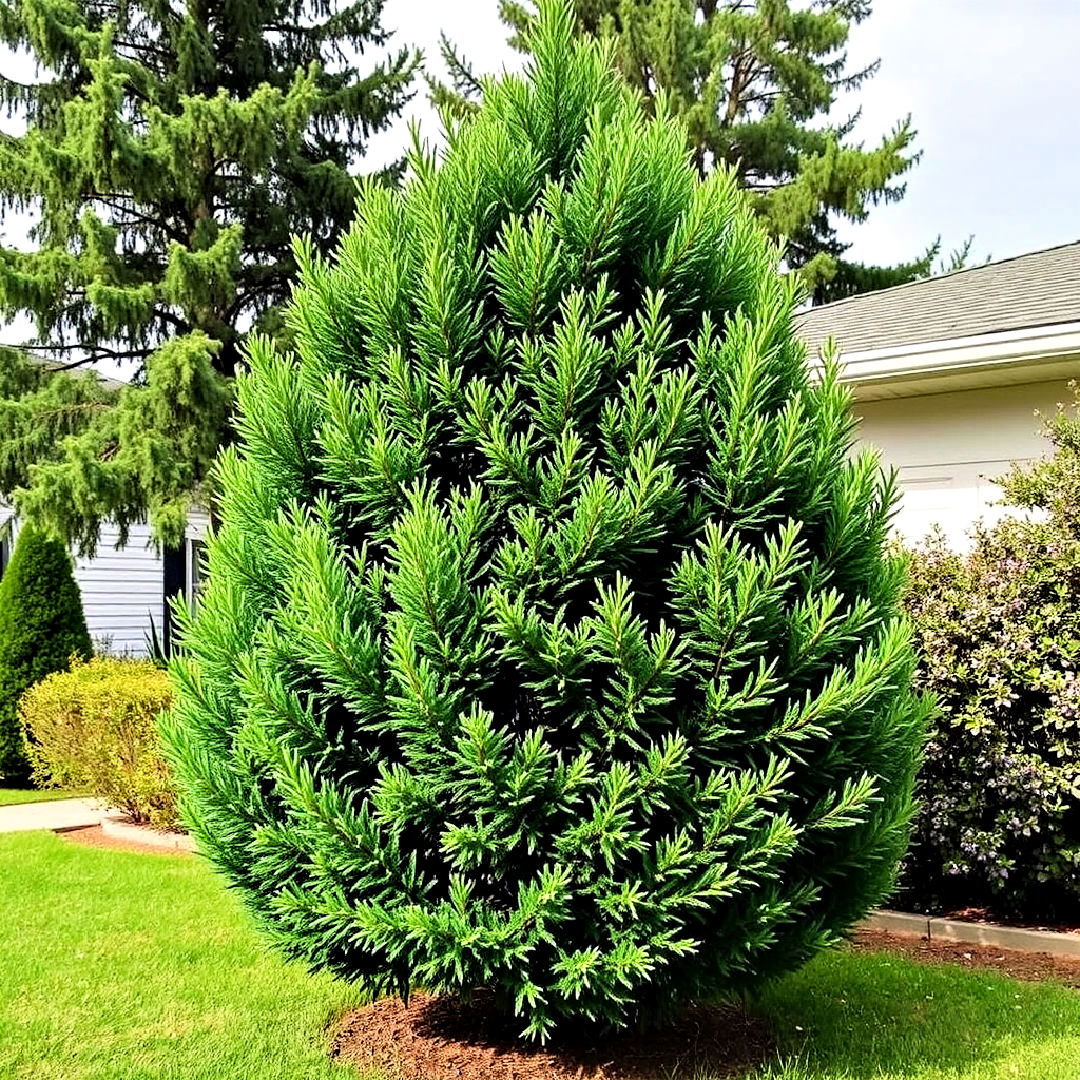
For those seeking an evergreen tree with year-round interest, the Eastern Red Cedar is a great option. Growing up to 30 feet tall but with a narrow, upright form, it fits well in small front yards. Its dense, fragrant foliage provides privacy and serves as a habitat for birds. This hardy tree is drought-tolerant and thrives in various soil types, making it both practical and attractive for low-maintenance landscapes.
20. Saucer Magnolia (Magnolia × soulangeana)
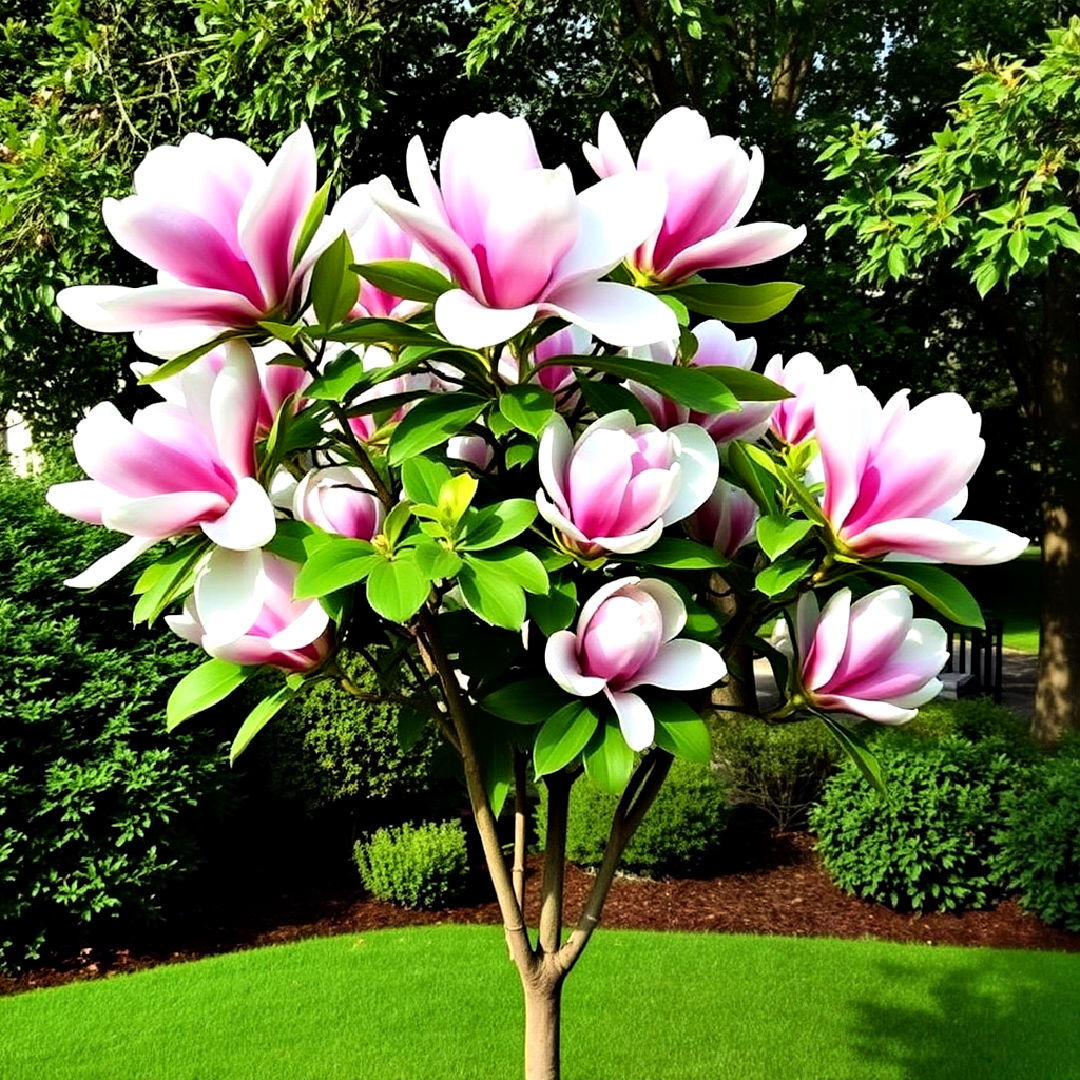
With large, cup-shaped pink and white flowers, the Saucer Magnolia makes a bold statement in spring. This tree typically grows 20-30 feet tall and creates a dramatic focal point for front yards. In addition to its spring blooms, the Saucer Magnolia offers a rounded form with lush green leaves throughout the summer. It thrives in full sun or partial shade and well-drained soil, making it a versatile option for many climates.
21. Sargent Cherry (Prunus sargentii)
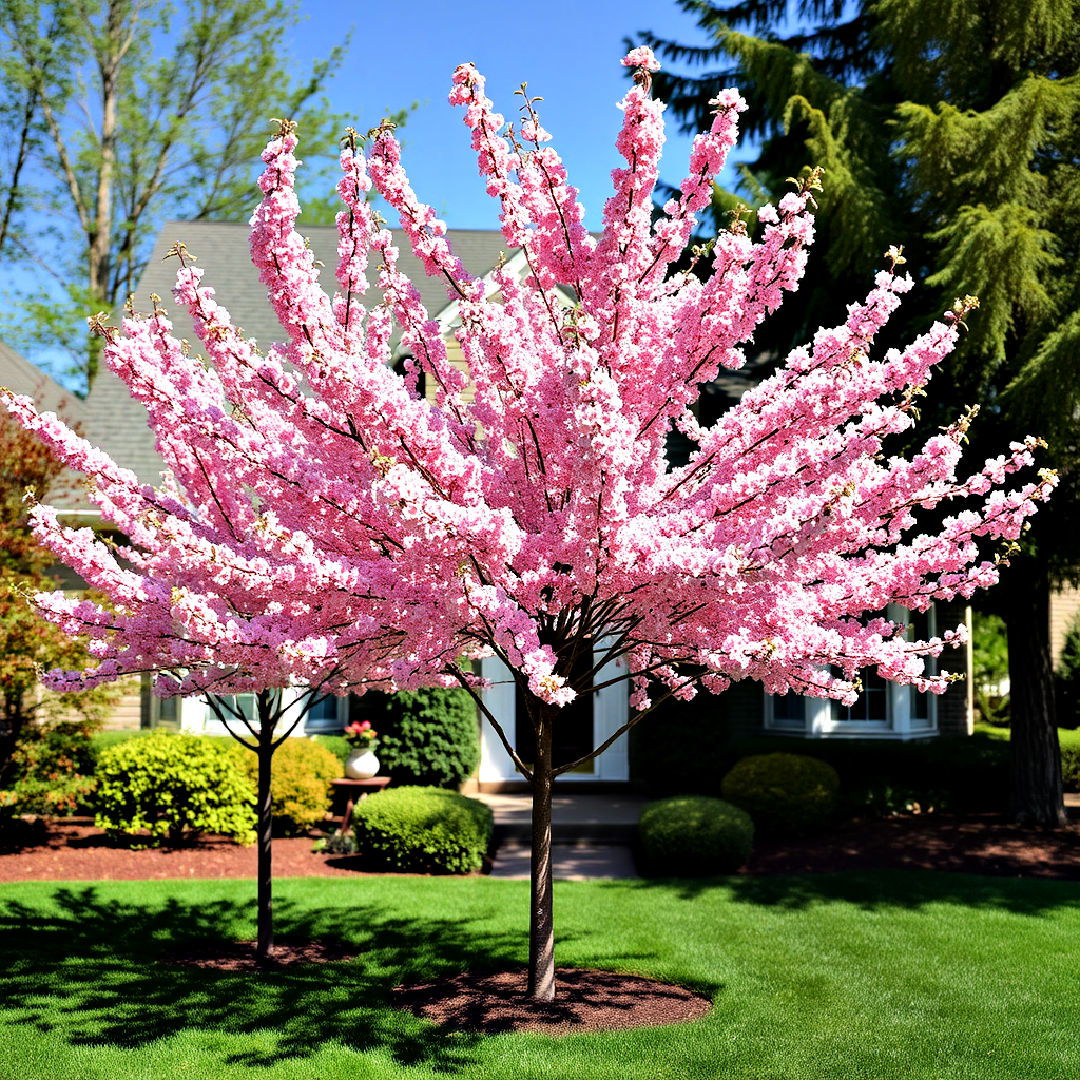
The Sargent Cherry tree offers beautiful pink blossoms in early spring, followed by glossy green foliage and a vibrant red fall color. Growing to about 20-25 feet, it’s an ideal size for smaller yards. Its attractive bark provides interest even in winter. This tree is also tolerant of urban environments, making it perfect for front yards in more developed areas.
22. Japanese Stewartia (Stewartia pseudocamellia)
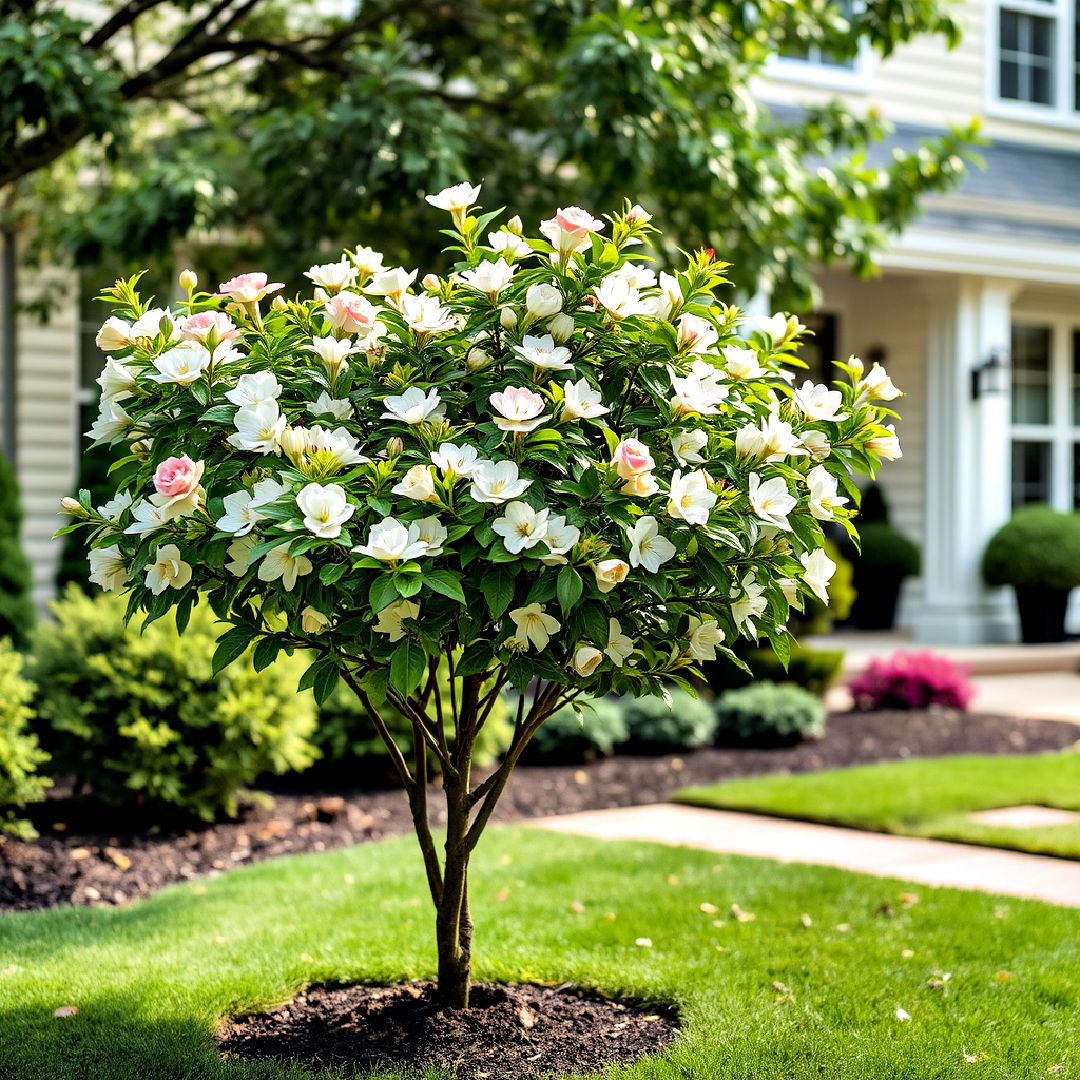
Known for its beautiful white, camellia-like flowers in early summer, the Japanese Stewartia brings elegance to the front yards. Reaching 20-40 feet, this tree also offers stunning fall foliage in shades of red, orange, and yellow. Its exfoliating bark adds winter interest, making it a year-round asset. The Japanese Stewartia thrives in partial shade and well-drained soil, making it an excellent choice for adding structure and beauty to any landscape.
23. Dwarf Alberta Spruce (Picea glauca ‘Conica’)
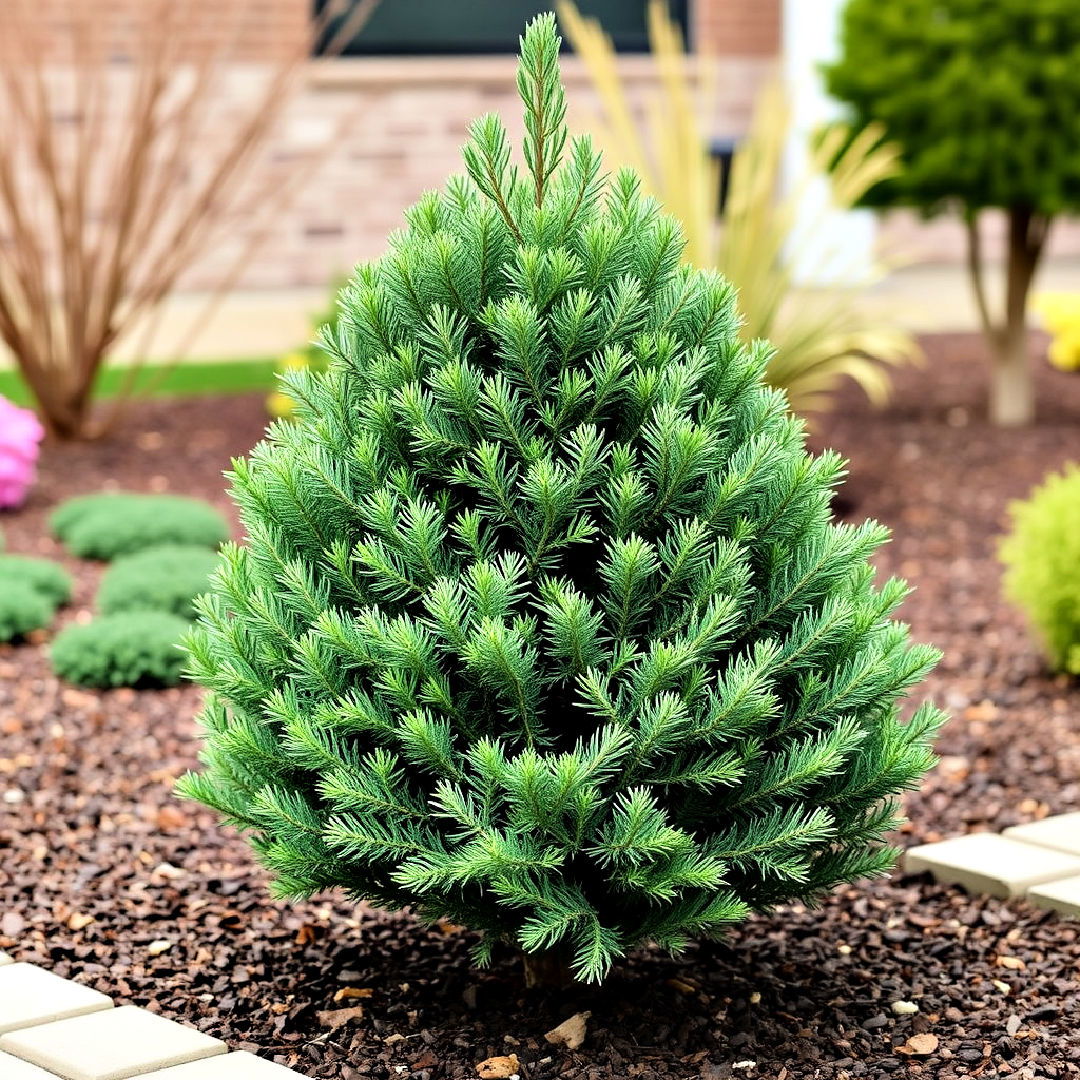
Create a welcoming entrance with small trees for front of house that add greenery and style. For a compact evergreen option, the Dwarf Alberta Spruce is a great choice. This slow-growing conifer reaches only about 10-12 feet in height, making it perfect for small front yards. Its dense, pyramid shape adds structure and greenery year-round. The Dwarf Alberta Spruce is low-maintenance, tolerating cold climates and thriving in full sun. It’s ideal for creating a formal, manicured look in any landscape.
24. Kousa Dogwood (Cornus kousa)
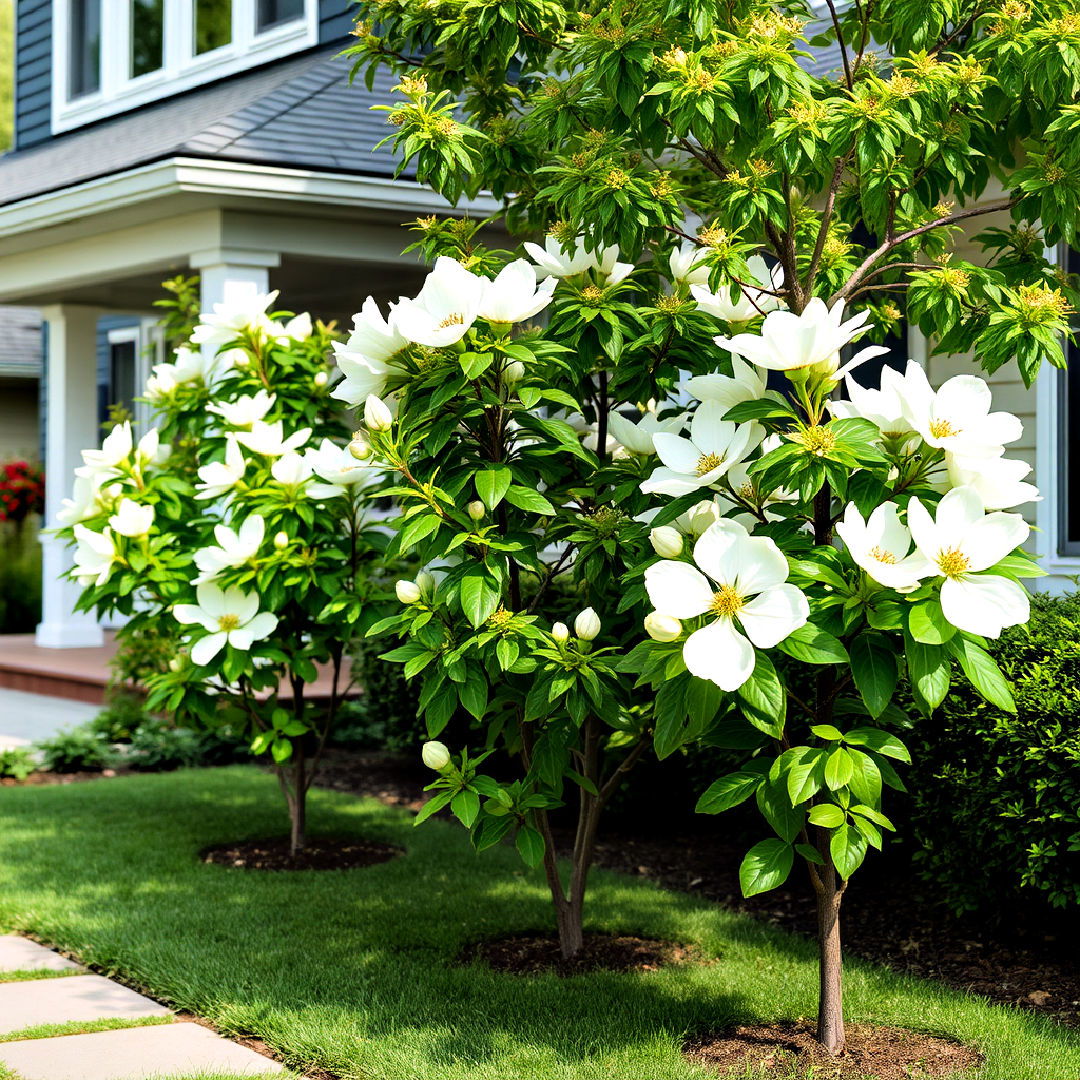
The Kousa Dogwood offers stunning white or pink blooms in late spring, followed by bright red berries in the fall. Growing to about 15-30 feet tall, this tree provides multi-season interest with its colorful fall foliage and attractive bark. It thrives in full sun to partial shade and prefers well-drained soil. The Kousa Dogwood is also more resistant to diseases than other Dogwood species, making it a durable and beautiful addition to any front yard.
25. Goldenrain Tree (Koelreuteria paniculata)
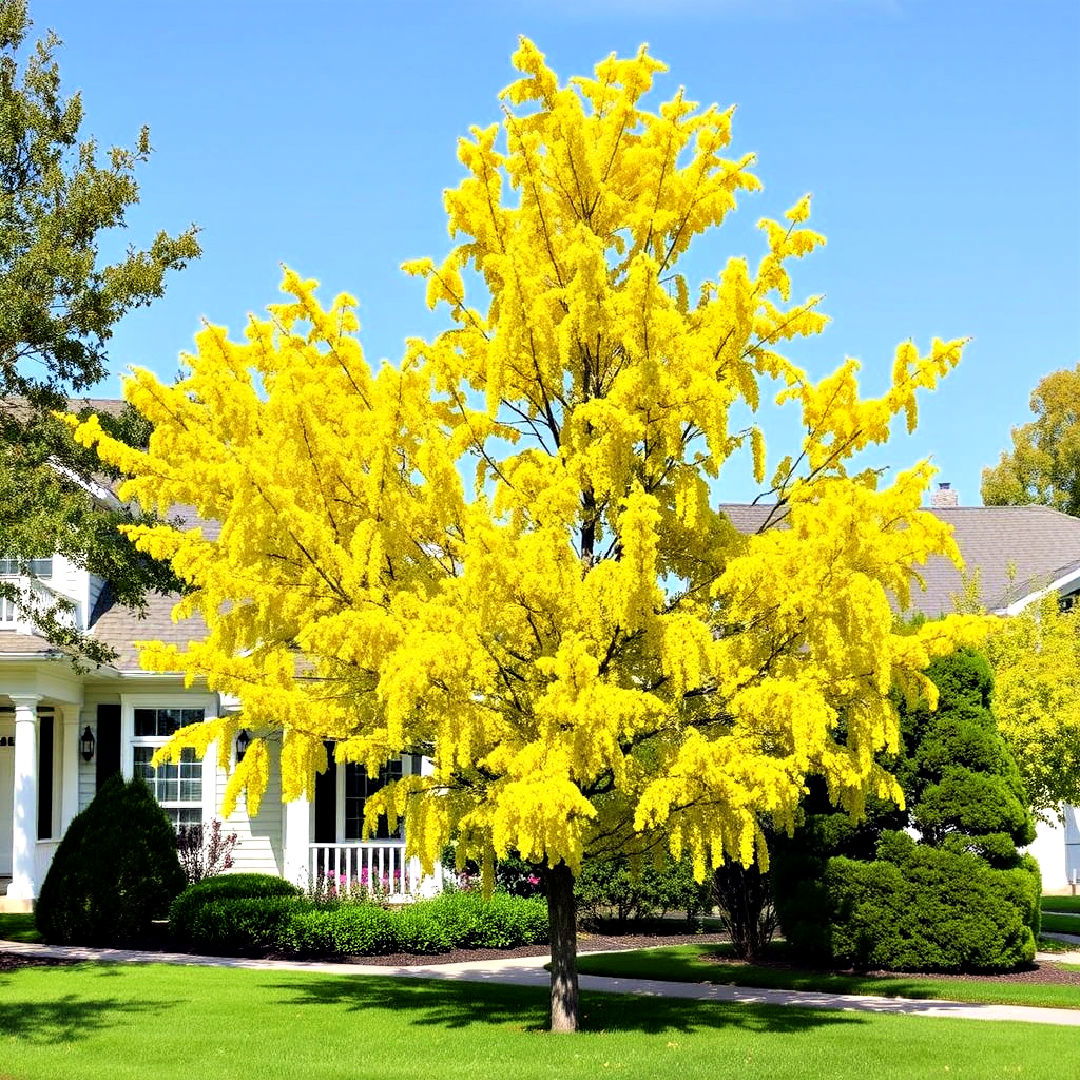
The Goldenrain Tree produces showy clusters of yellow flowers in late summer, followed by decorative seed pods. Reaching around 20-30 feet tall, it adds vibrant color to front yards during the growing season. Its tolerance for urban environments and drought makes it a practical choice for low-maintenance landscapes. In fall, the Goldenrain Tree’s leaves turn a beautiful yellow, adding to its seasonal interest.
Conclusion:
Small trees are a game-changer when it comes to boosting curb appeal and creating a dynamic, eye-catching landscape. From the striking colors of Japanese Maples to the elegant blooms of Dogwoods and Magnolias, each tree brings its own unique charm. By carefully selecting the right variety for your space, you can enjoy the benefits of year-round beauty, low maintenance, and a memorable first impression. Whether you’re aiming for vibrant seasonal color, intriguing textures, or fragrant blossoms, the perfect small tree is out there to elevate your front yard and create a stunning curb appeal that will have passersby admiring your home for years to come.
Key Points:
- Small trees enhance curb appeal by adding beauty, structure, and texture without overwhelming the space.
- Varieties such as Japanese Maple, Dogwood, and Magnolia offer year-round interest with vibrant seasonal colors and distinctive blooms.
- Choosing the right small tree requires considering the climate, size, and aesthetic preferences of your front yard.
- These trees provide additional benefits such as low maintenance, environmental contributions, and seasonal variety.
What to Do Next:
- Evaluate your front yard’s sunlight, soil, and space conditions to choose the most suitable tree species.
- Visit a local nursery or consult with a landscaping professional to select the best tree for your specific needs.
- Plan the tree placement to maximize its impact on curb appeal and ensure it complements existing landscaping elements.

